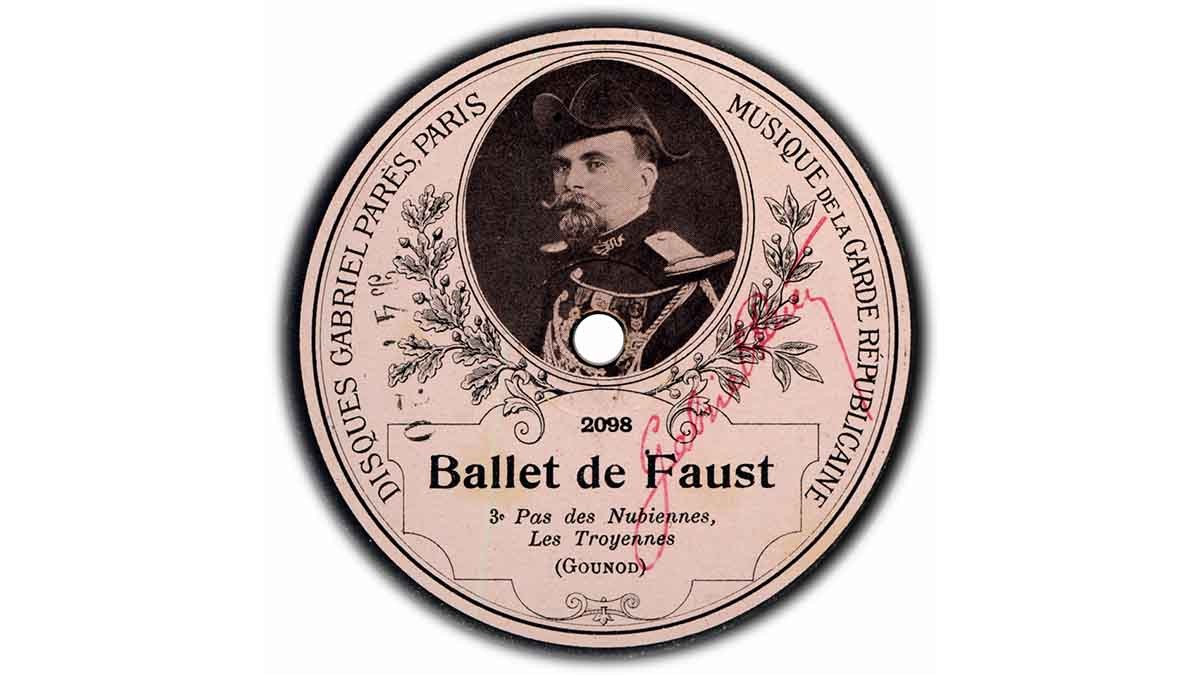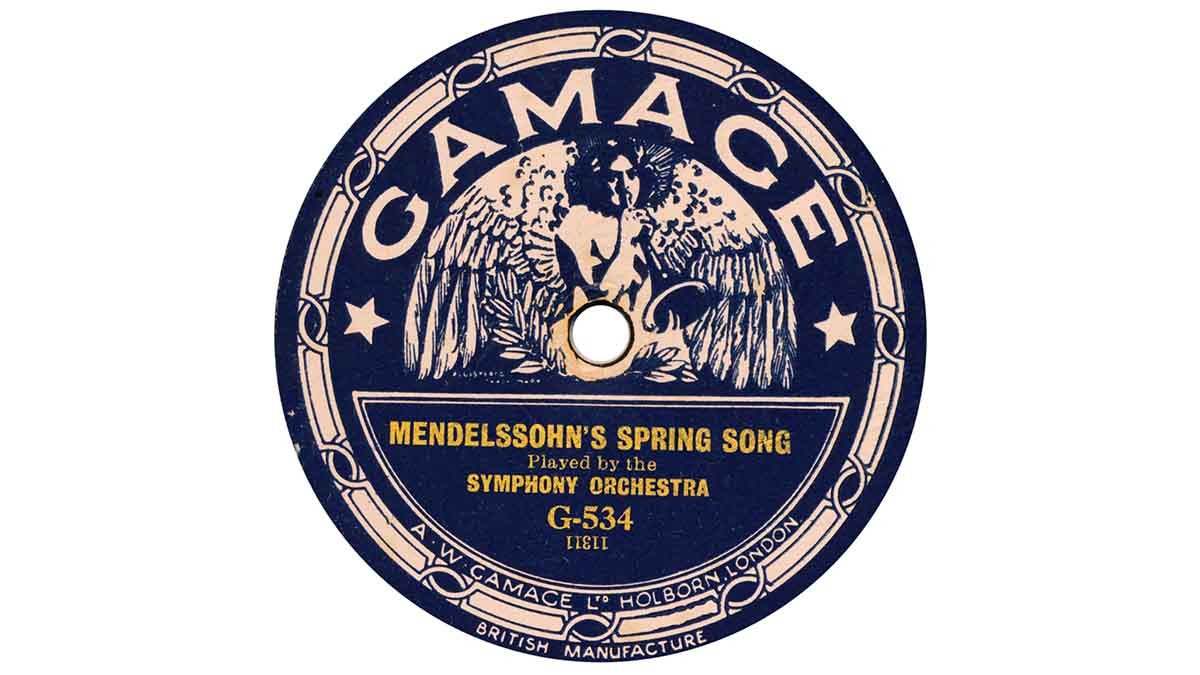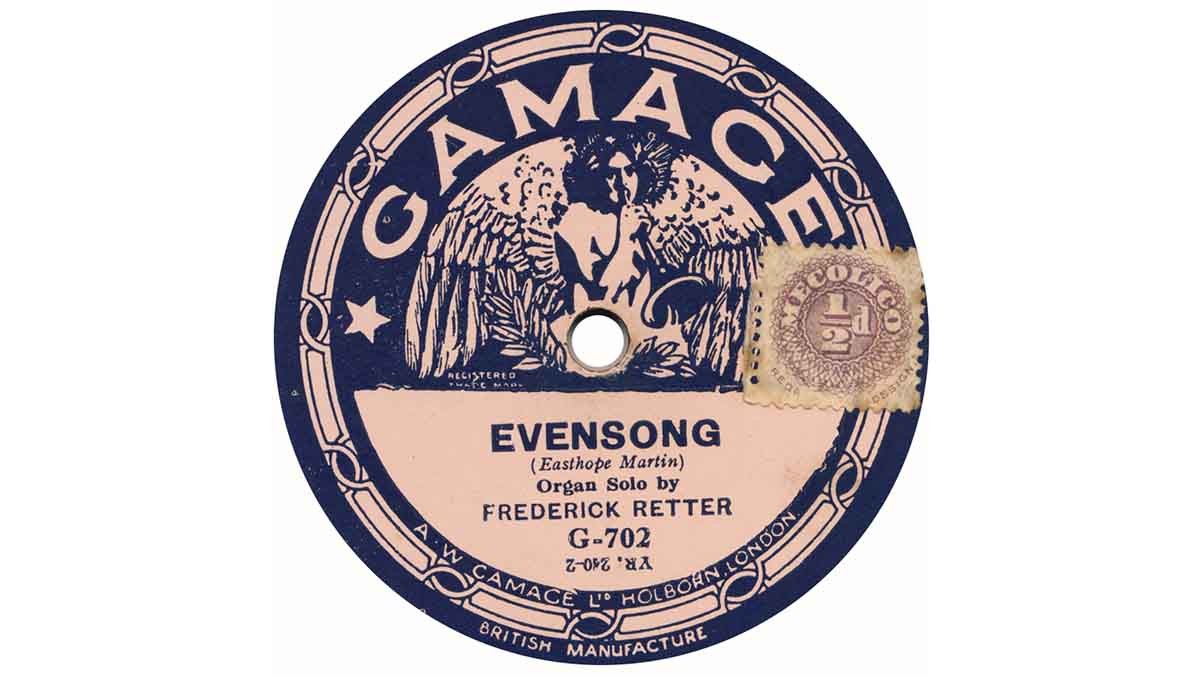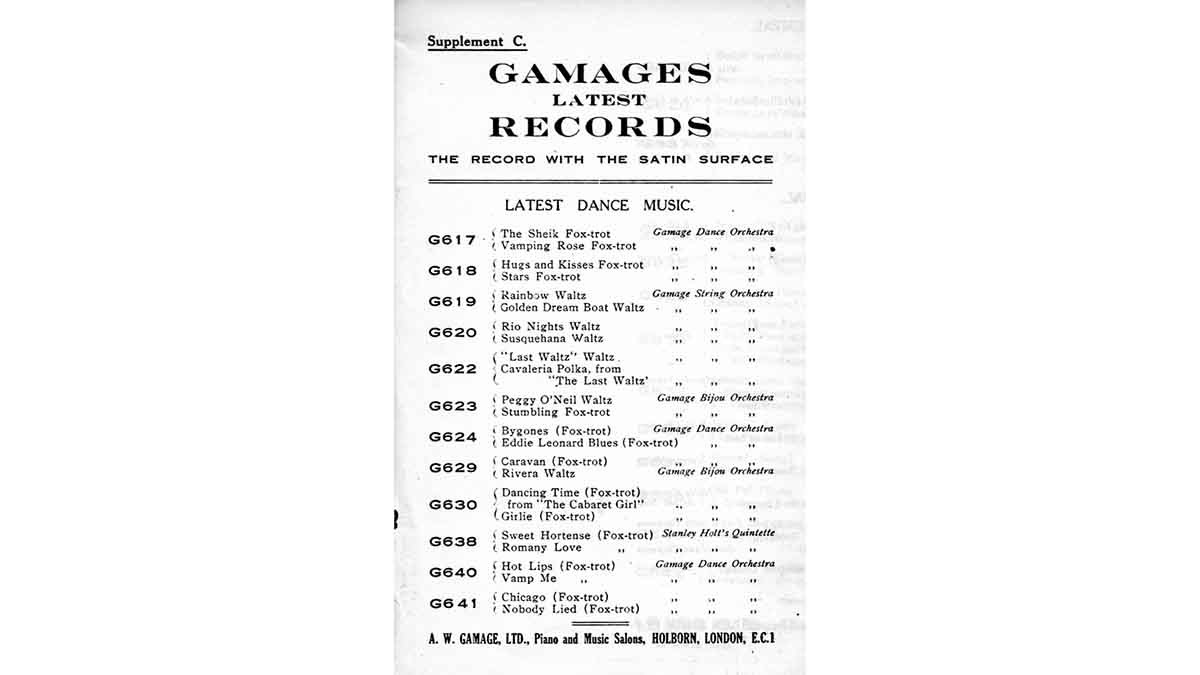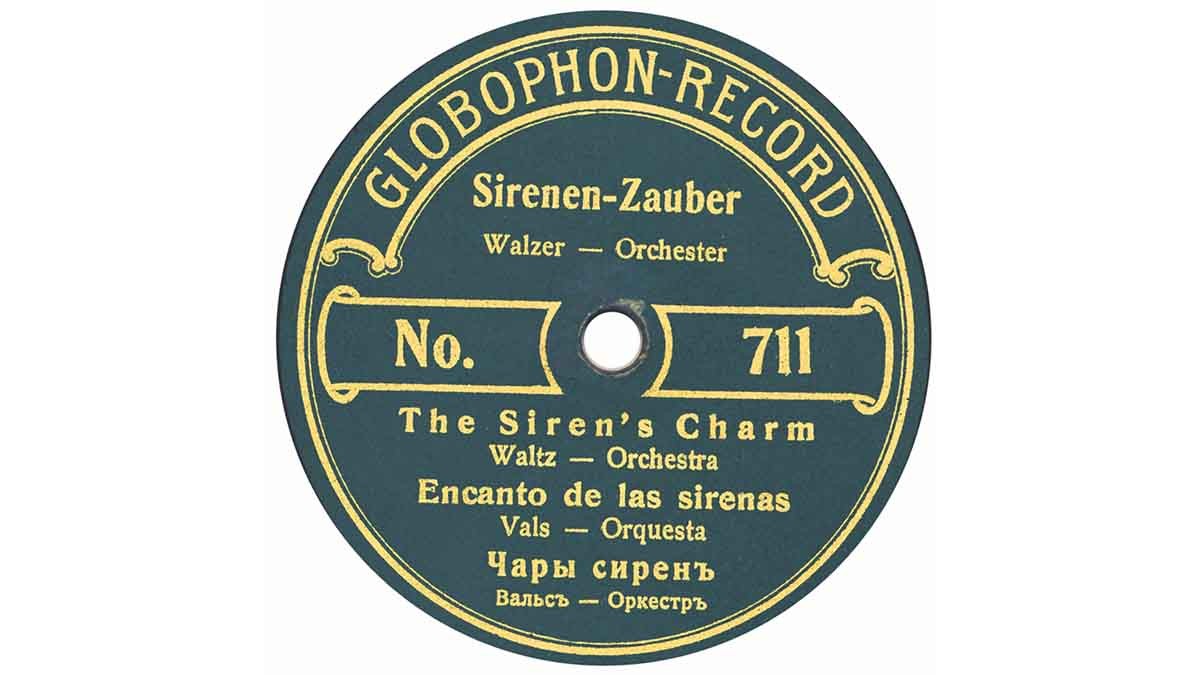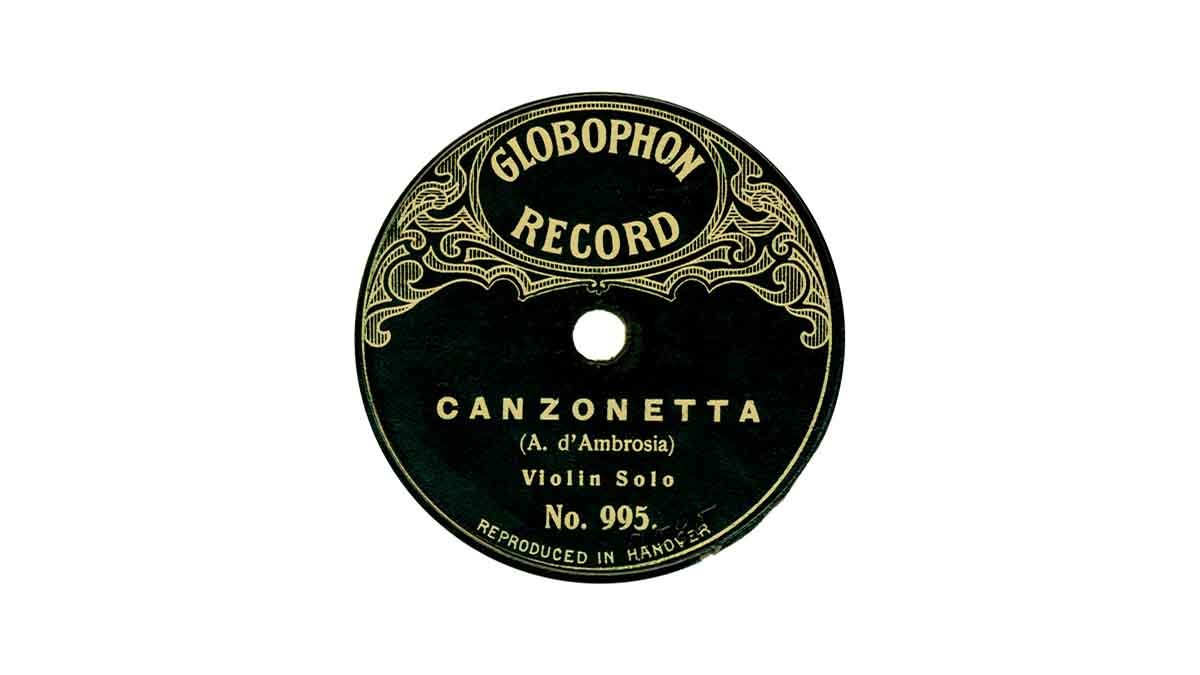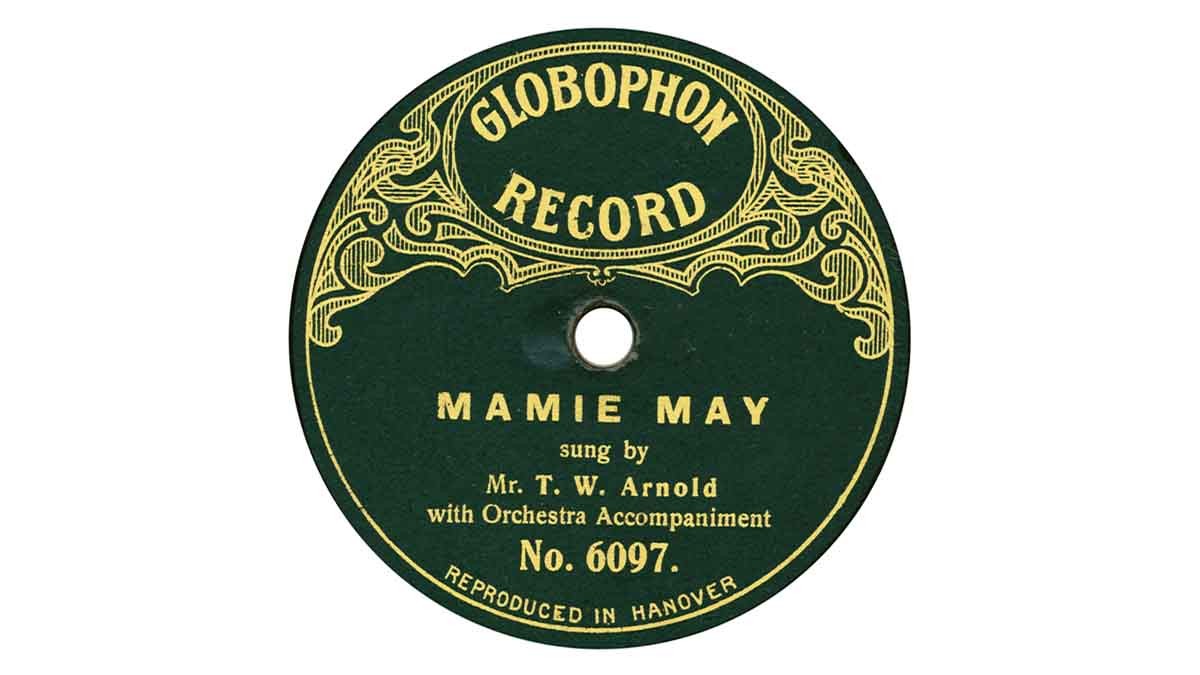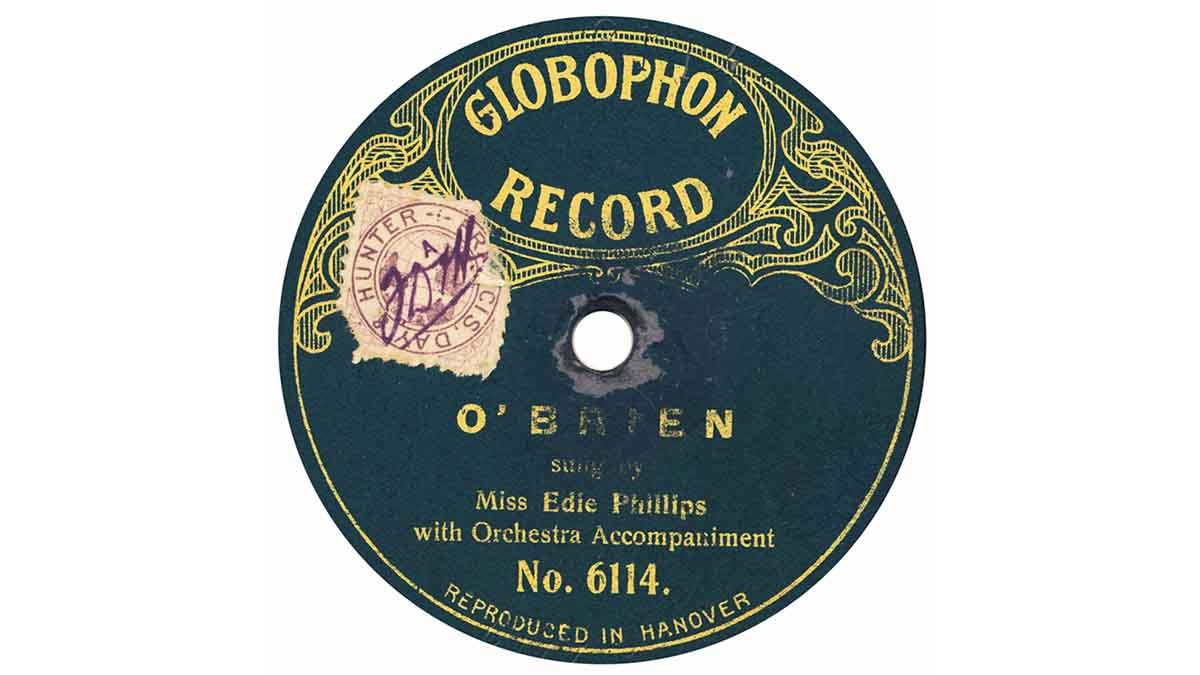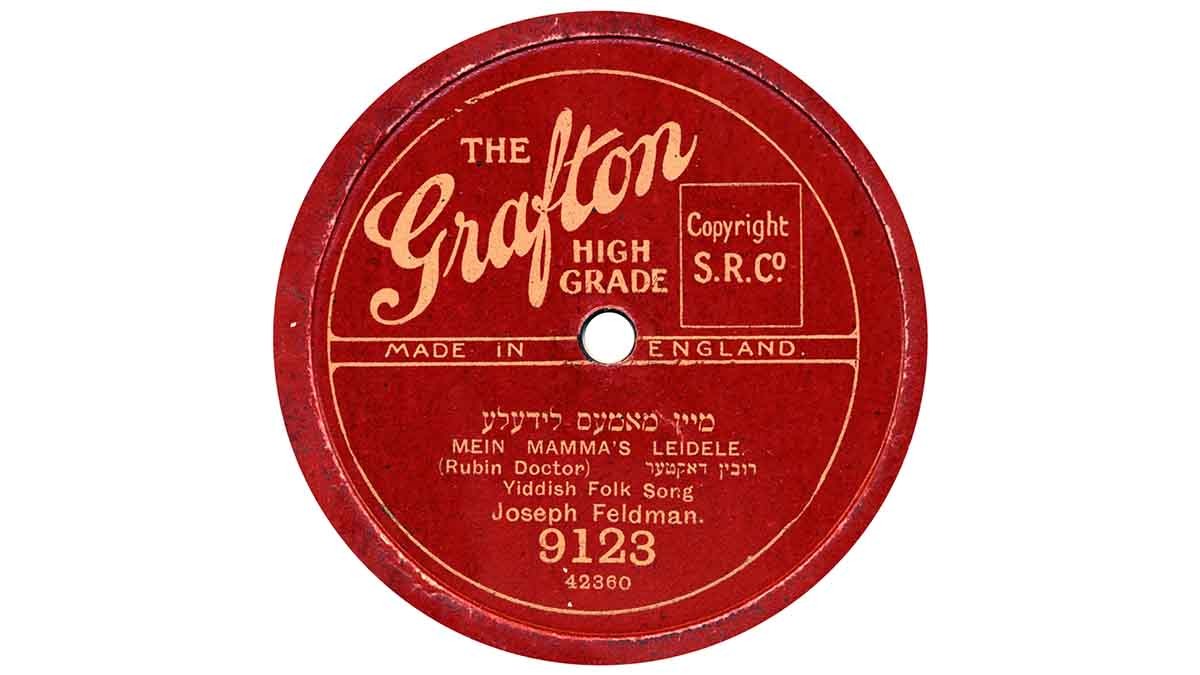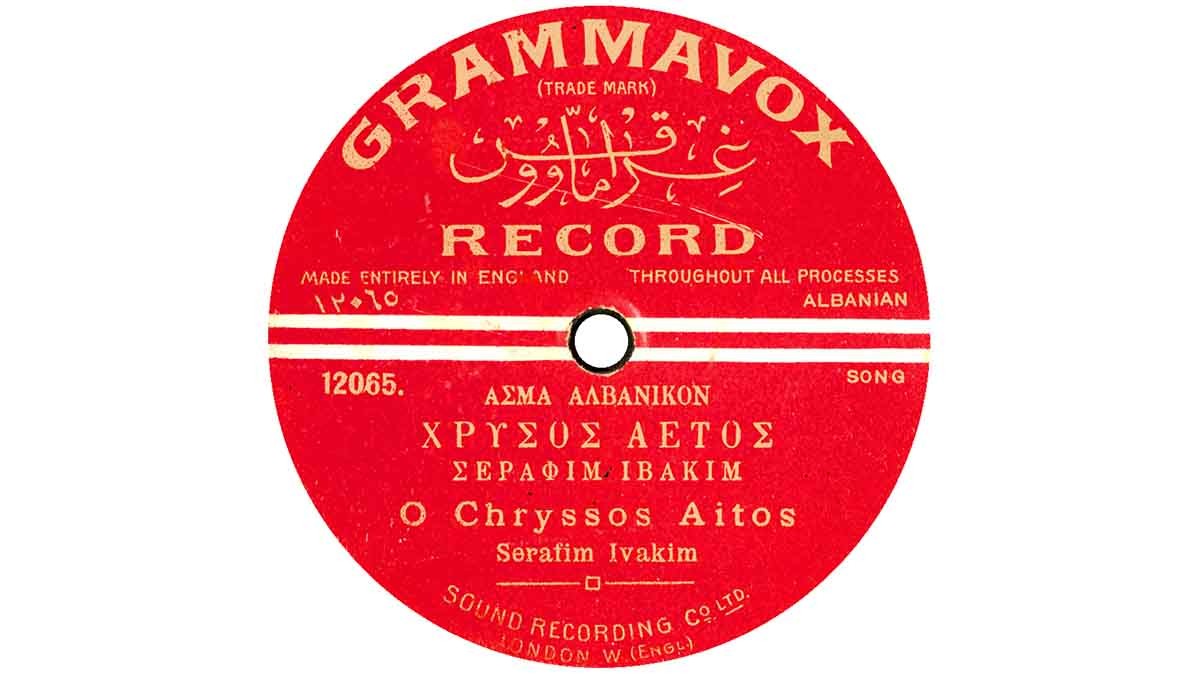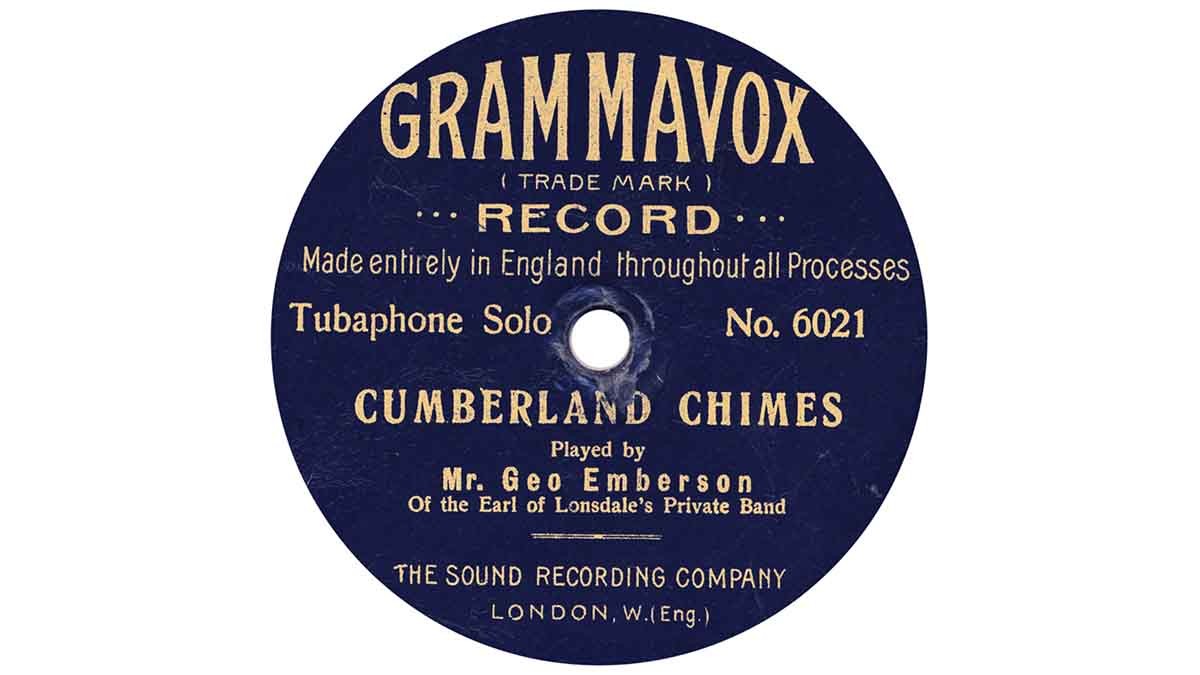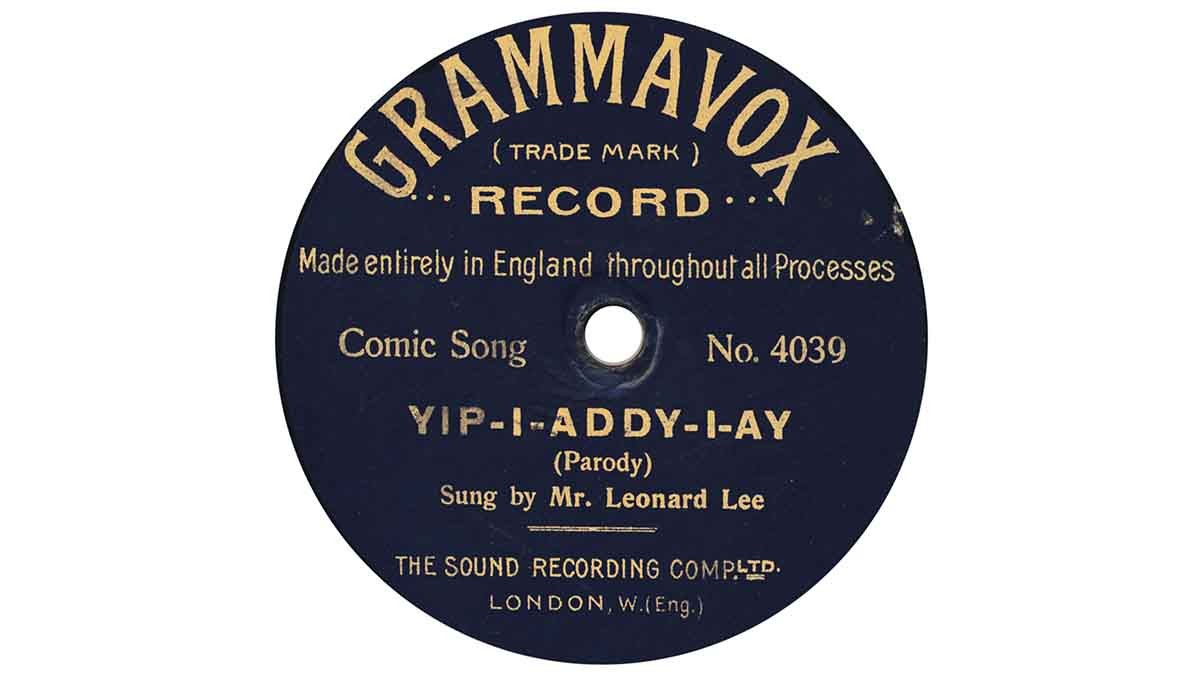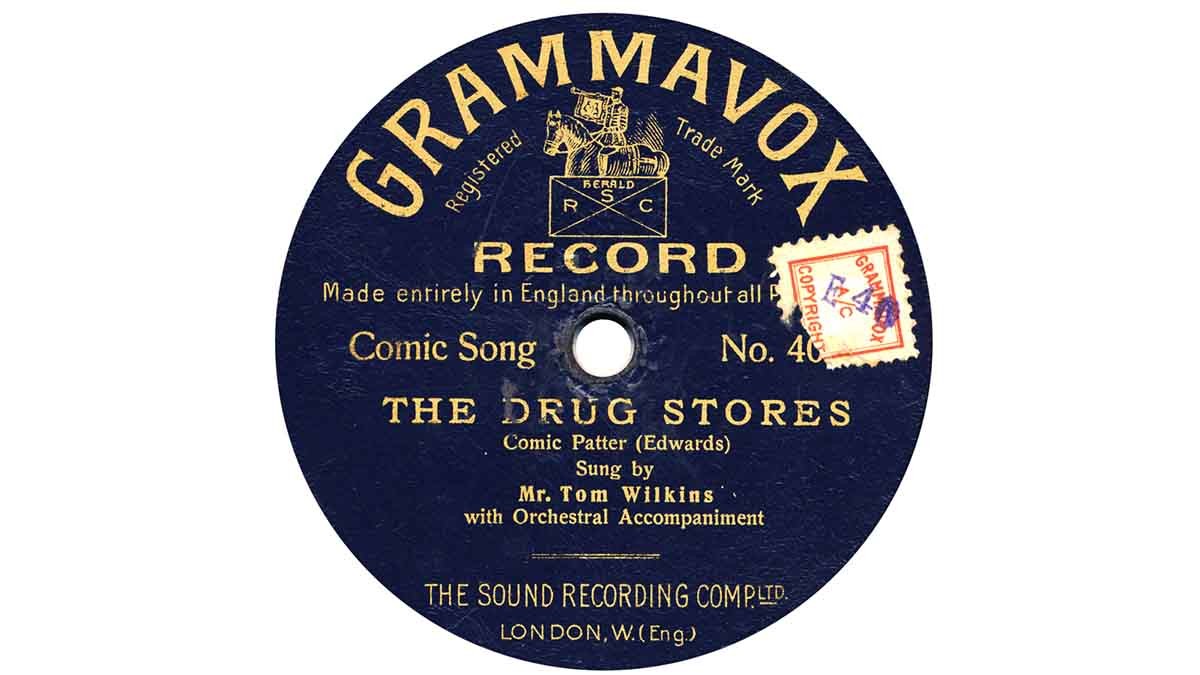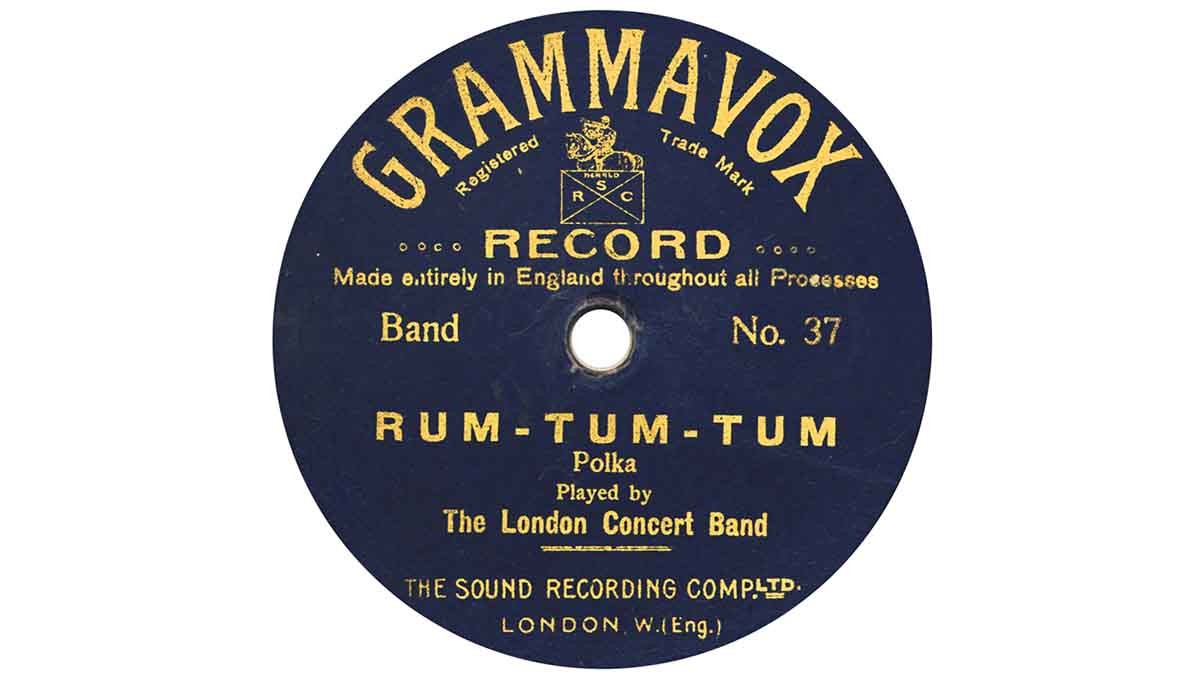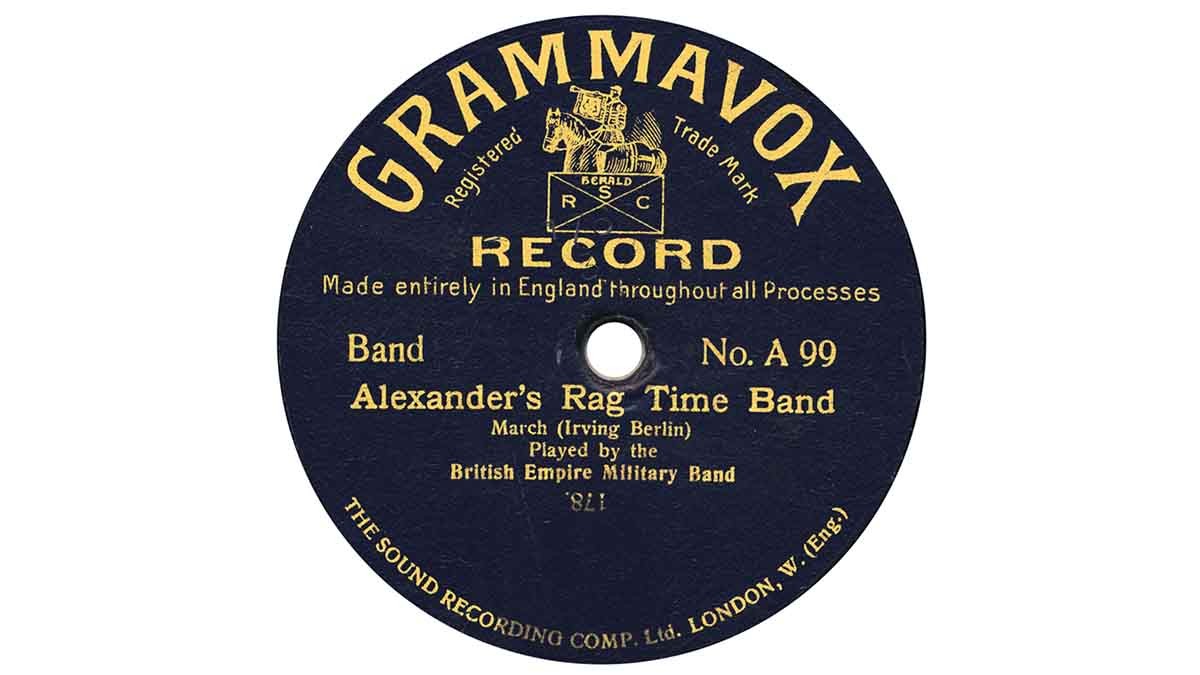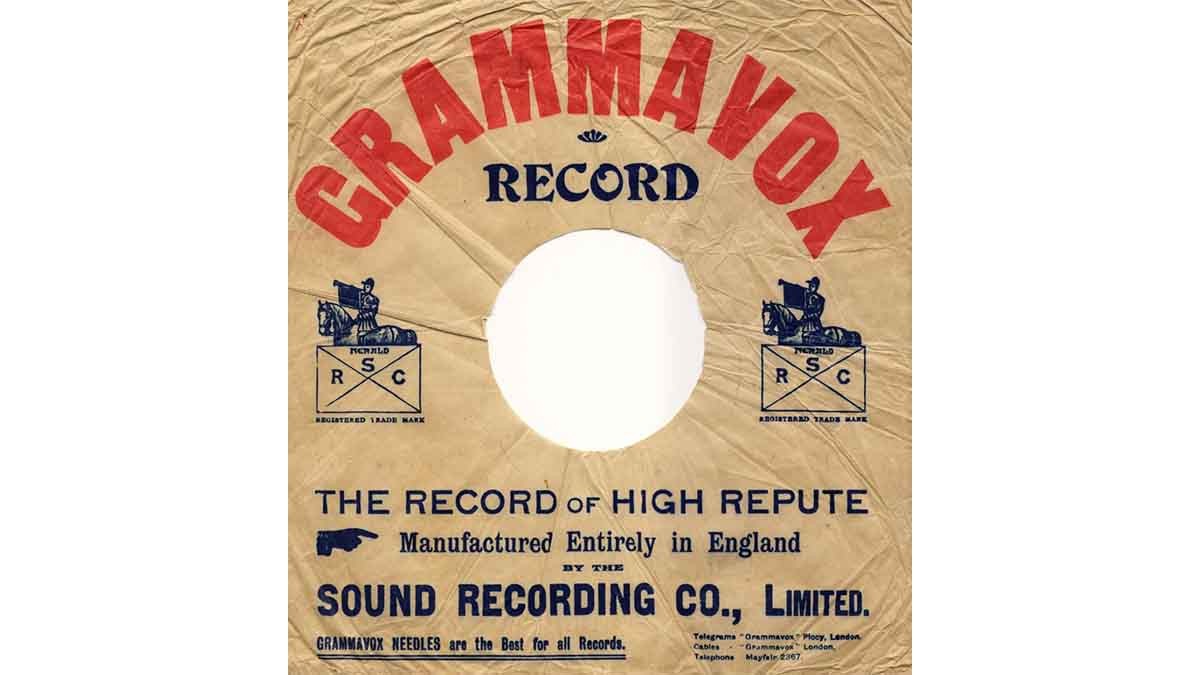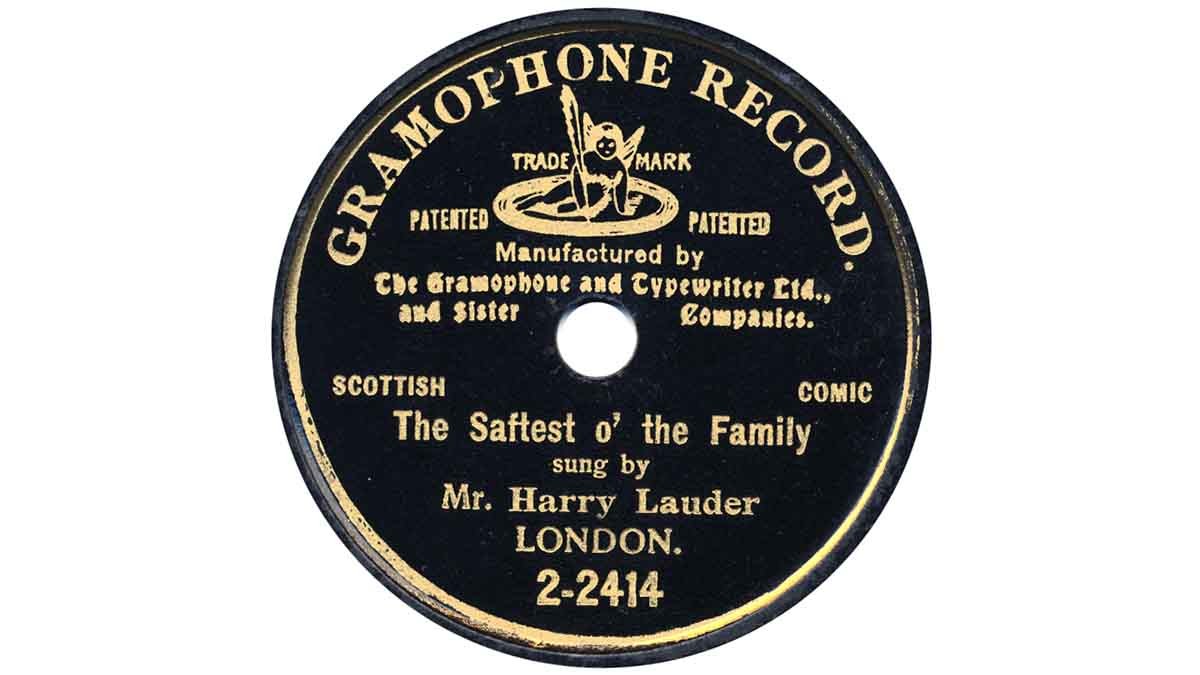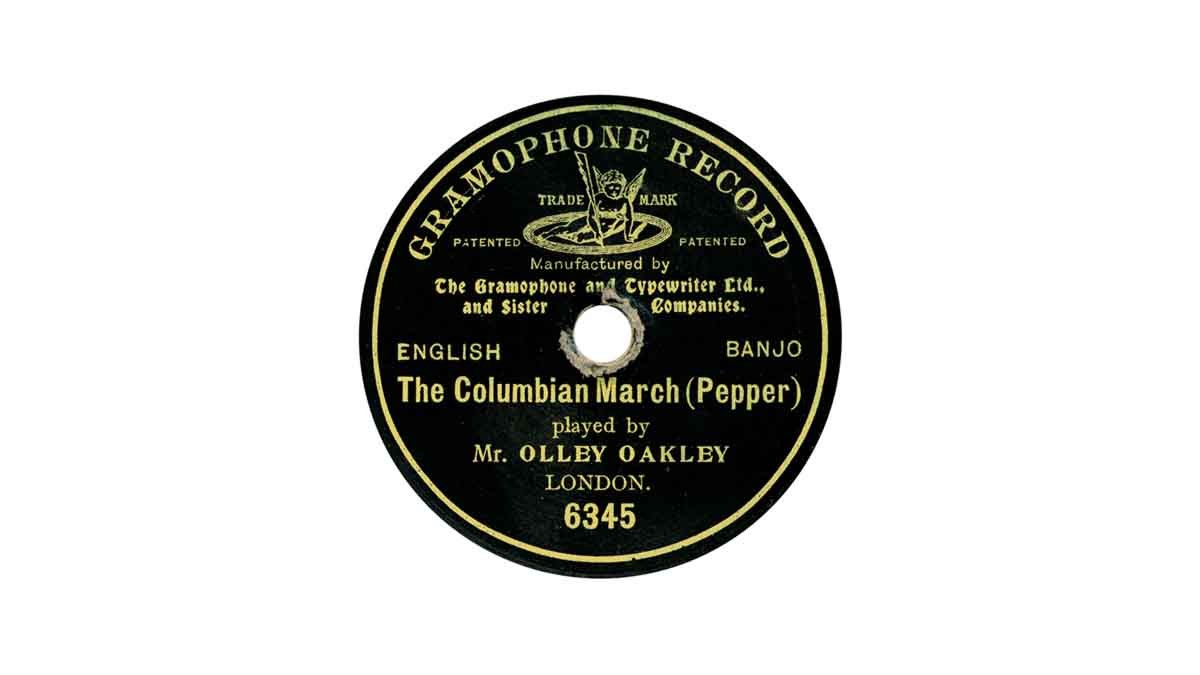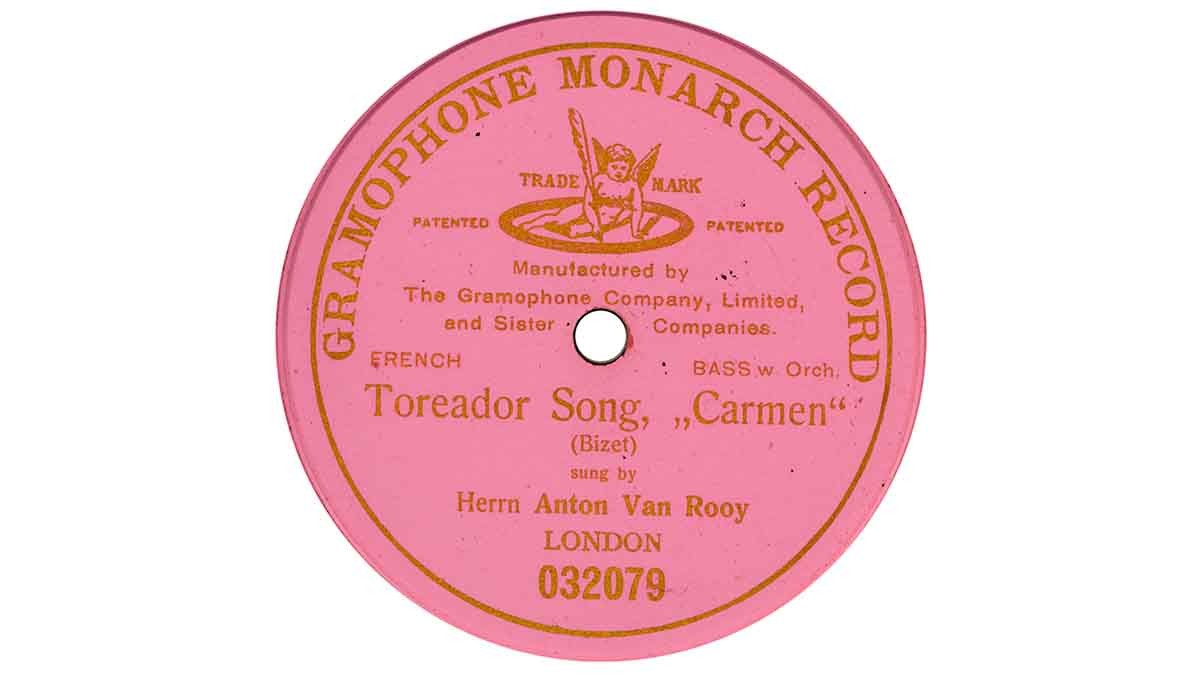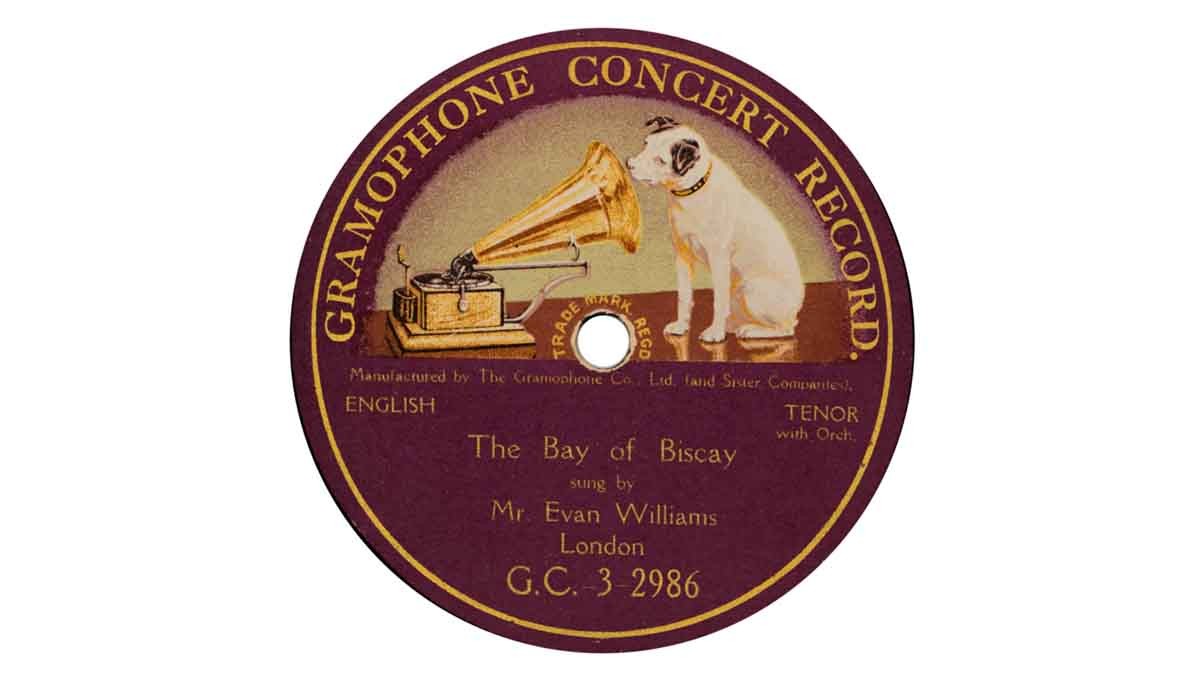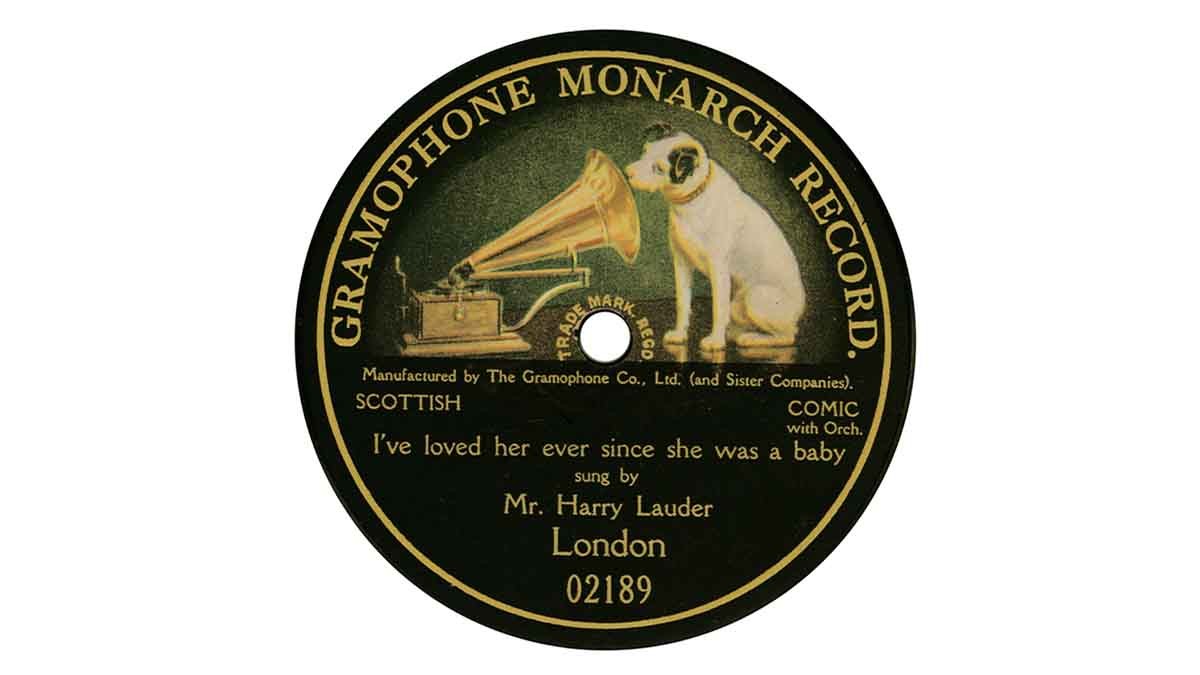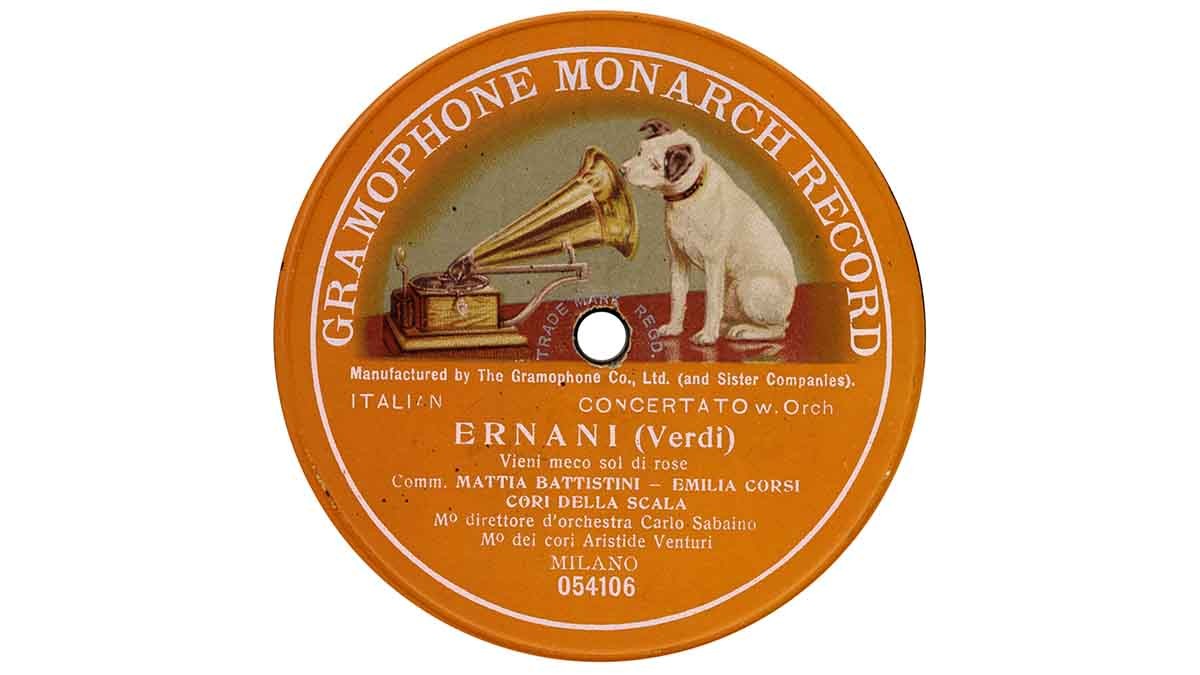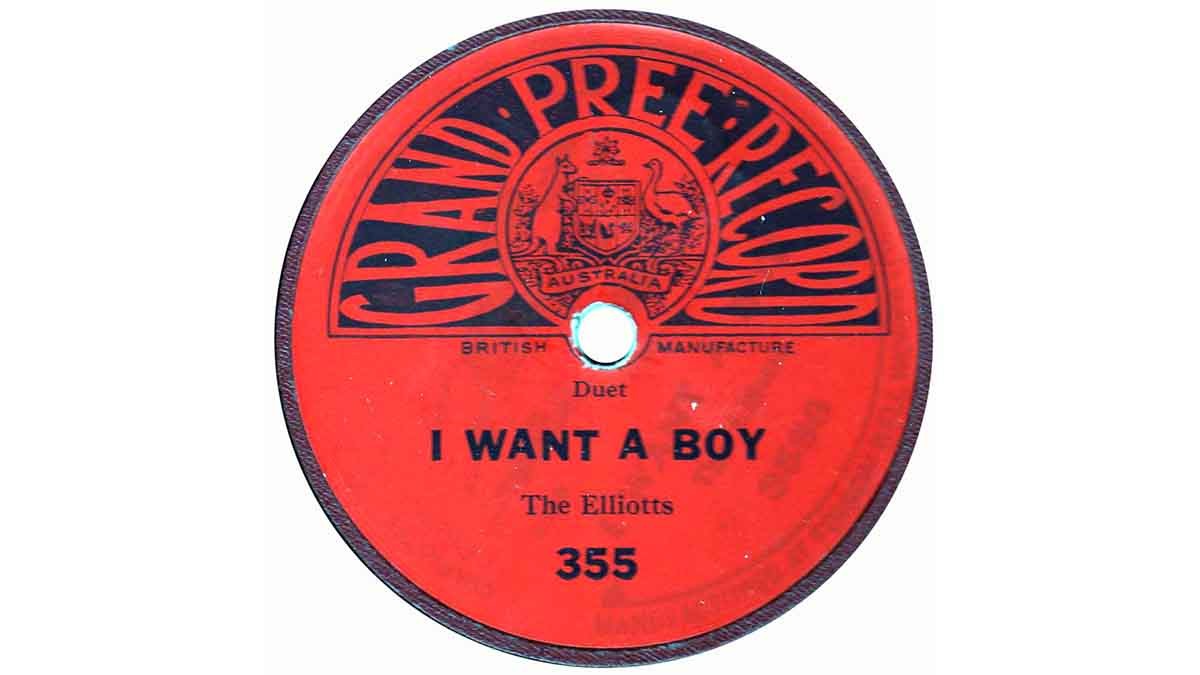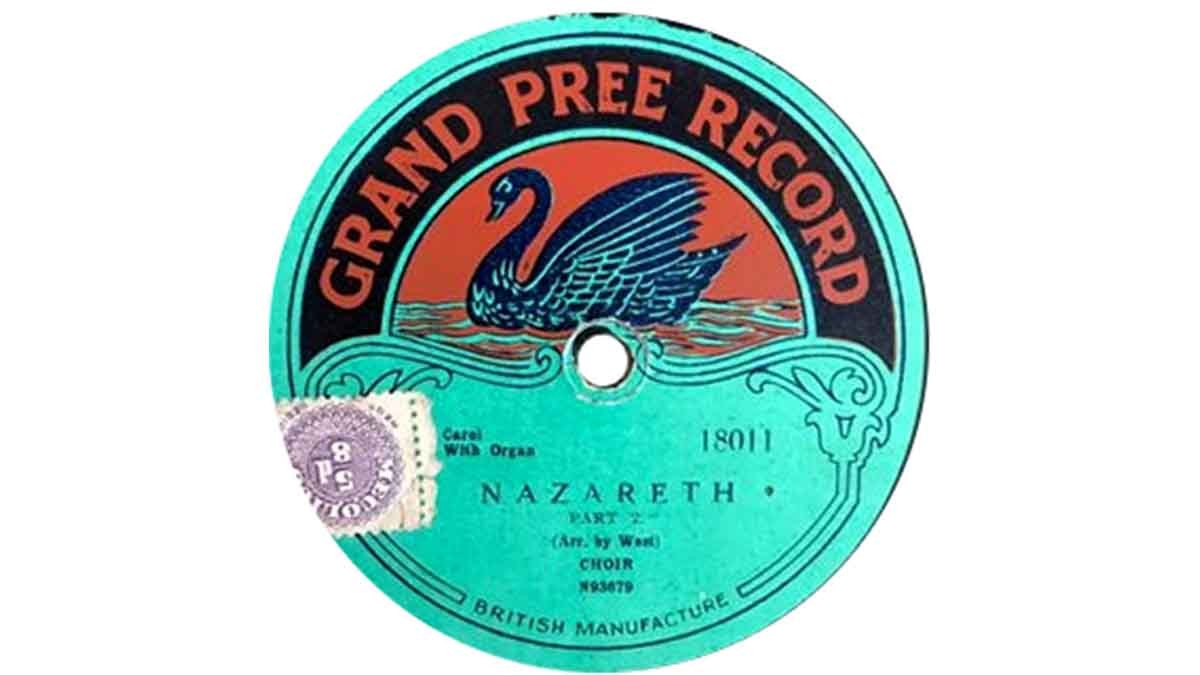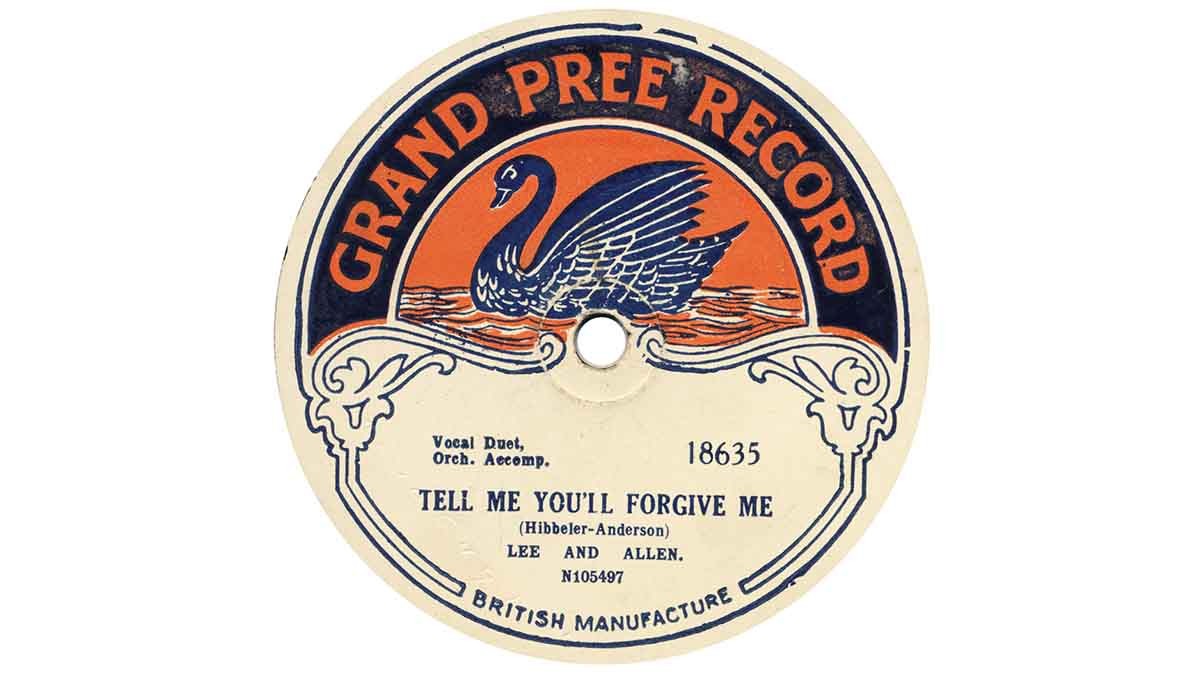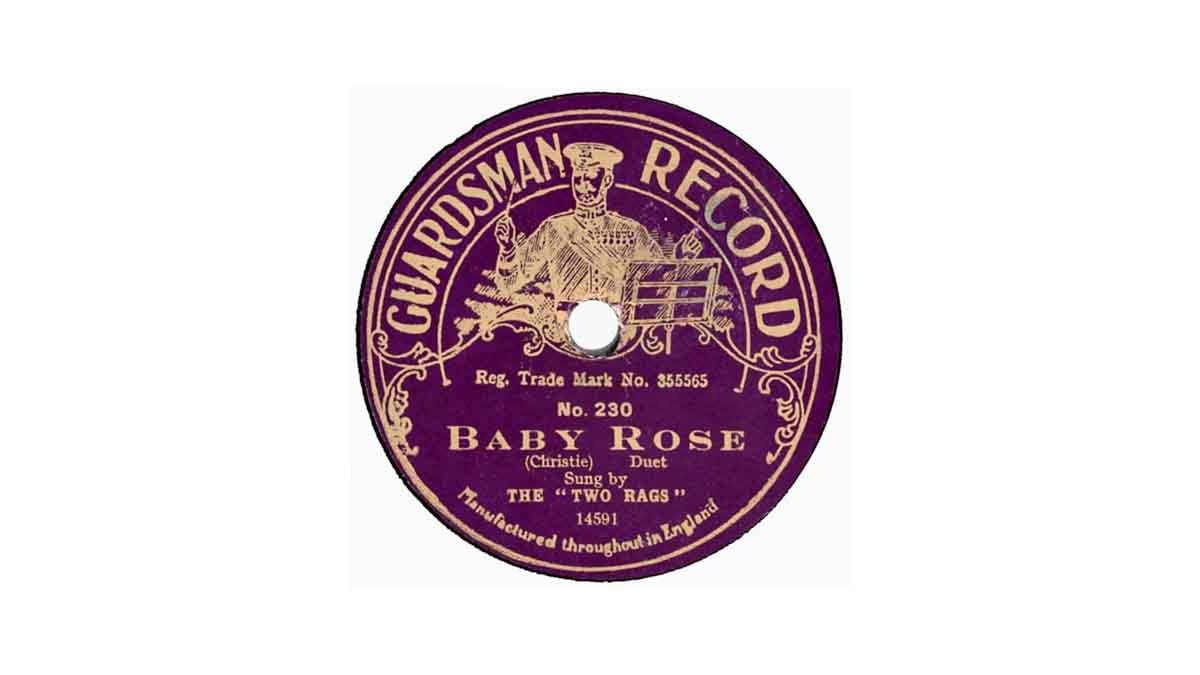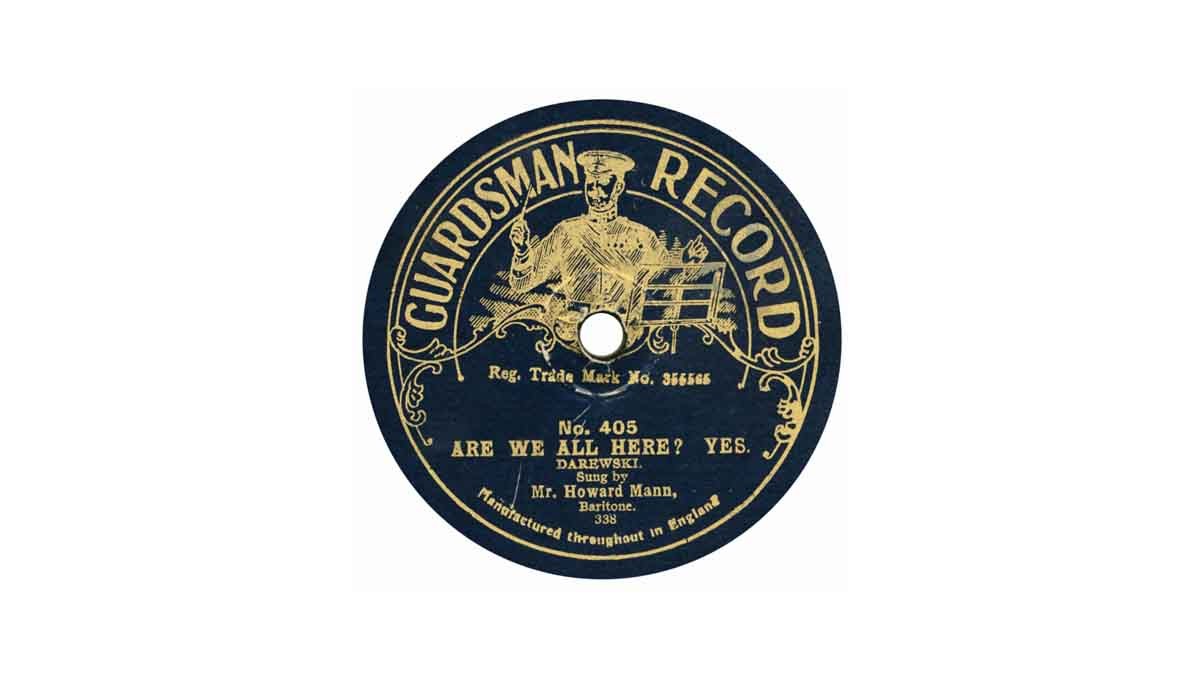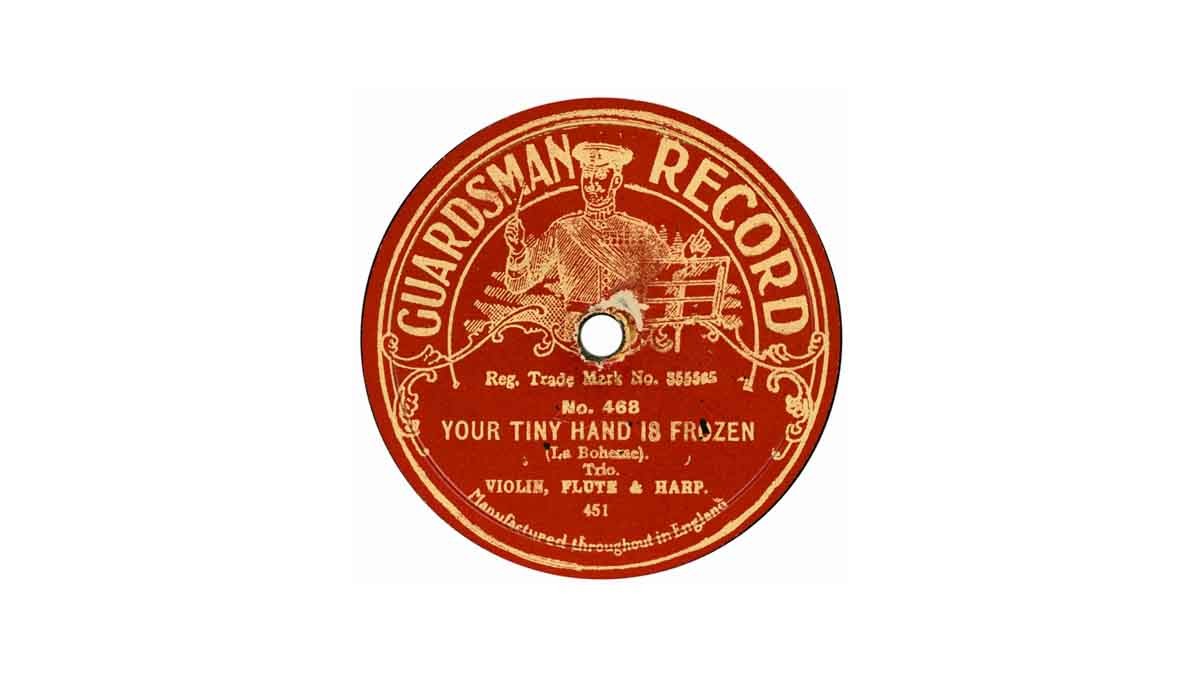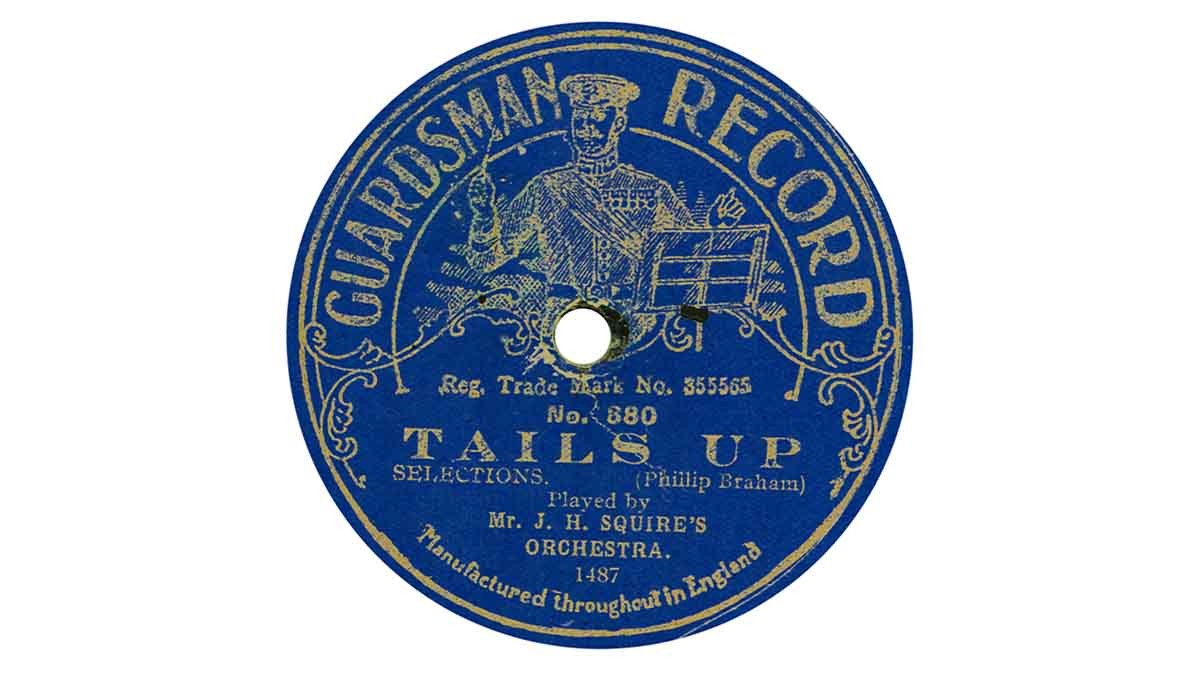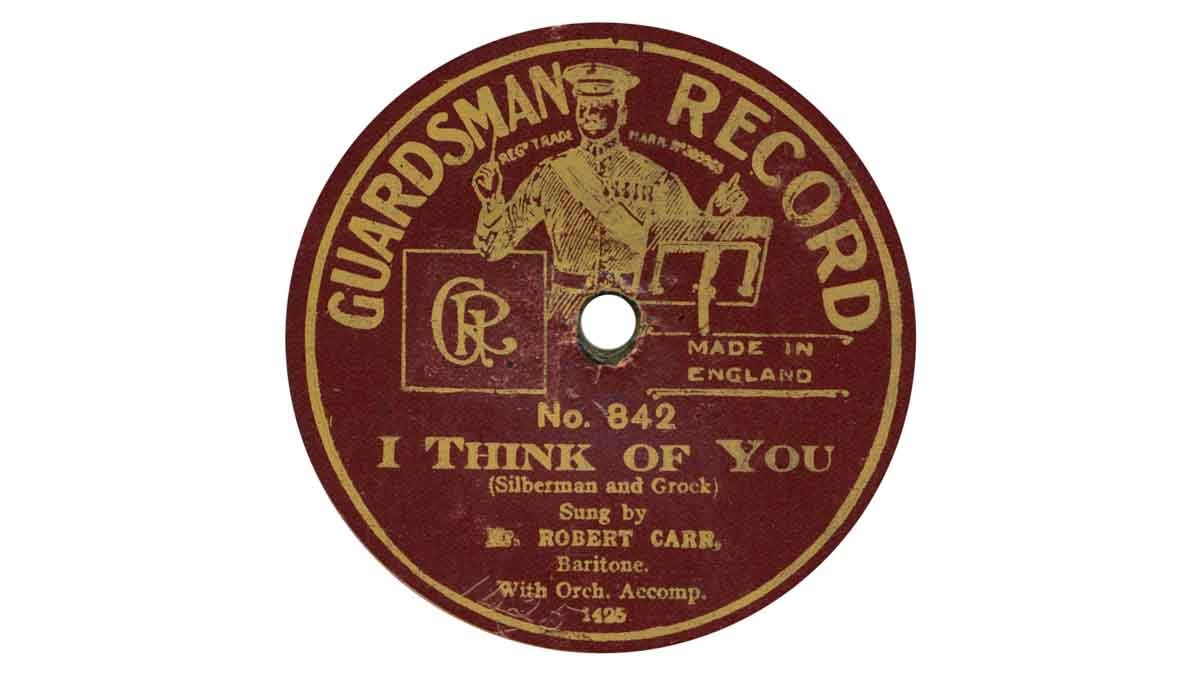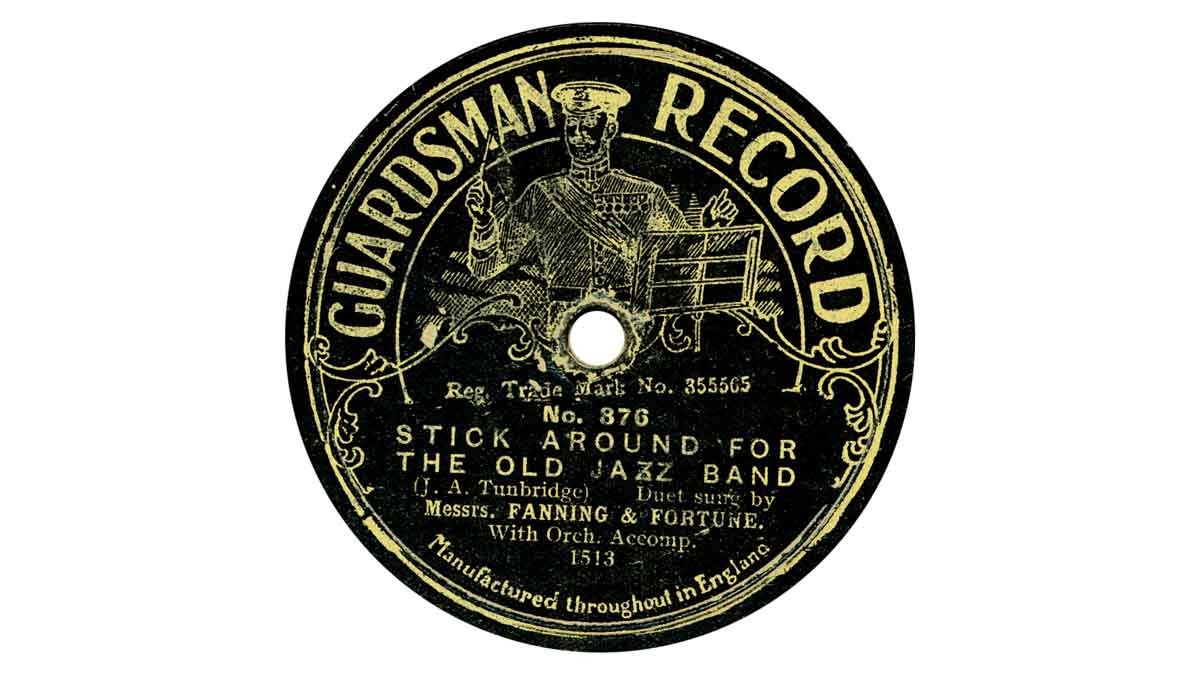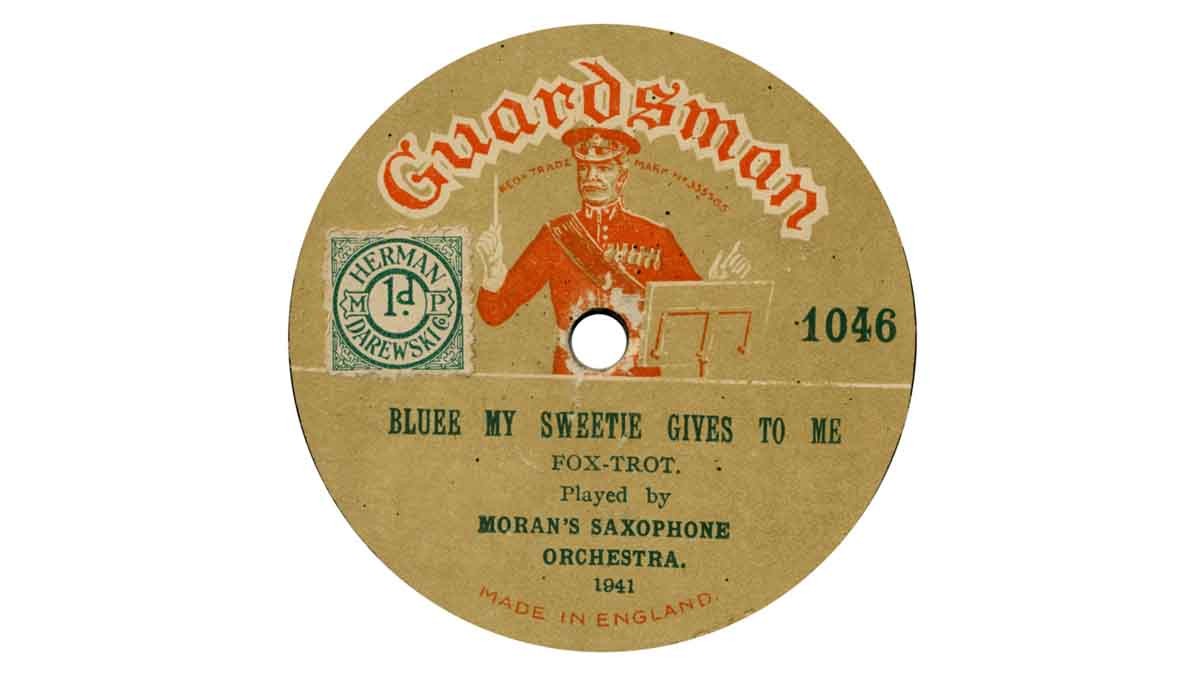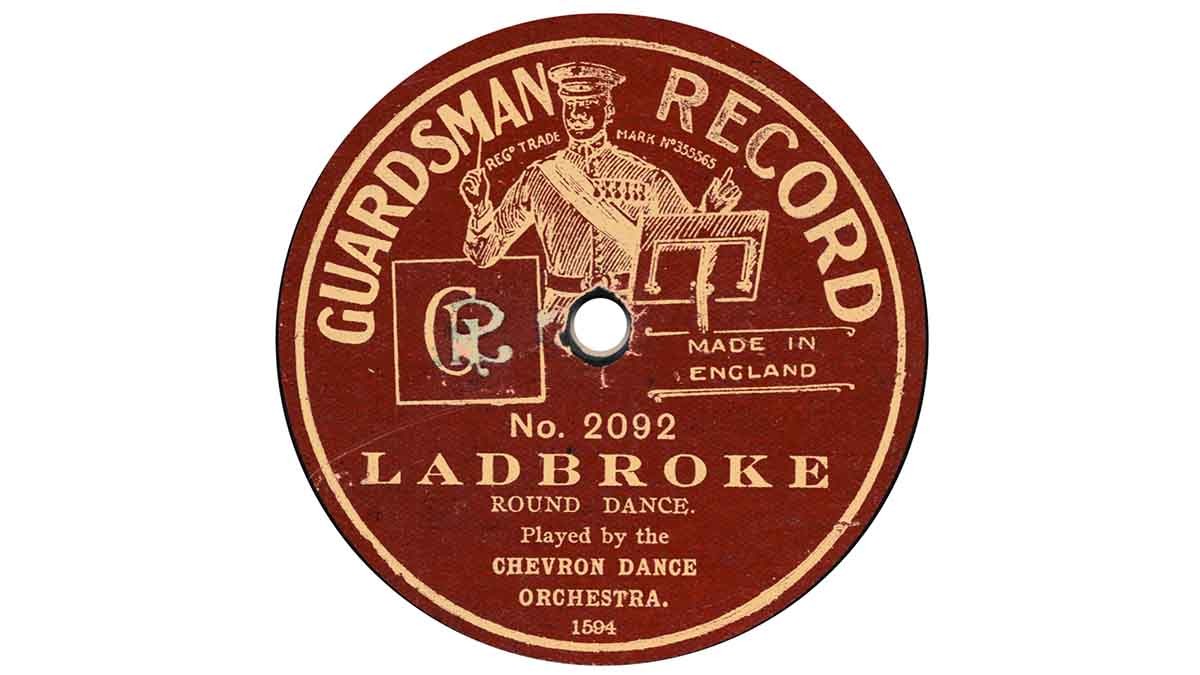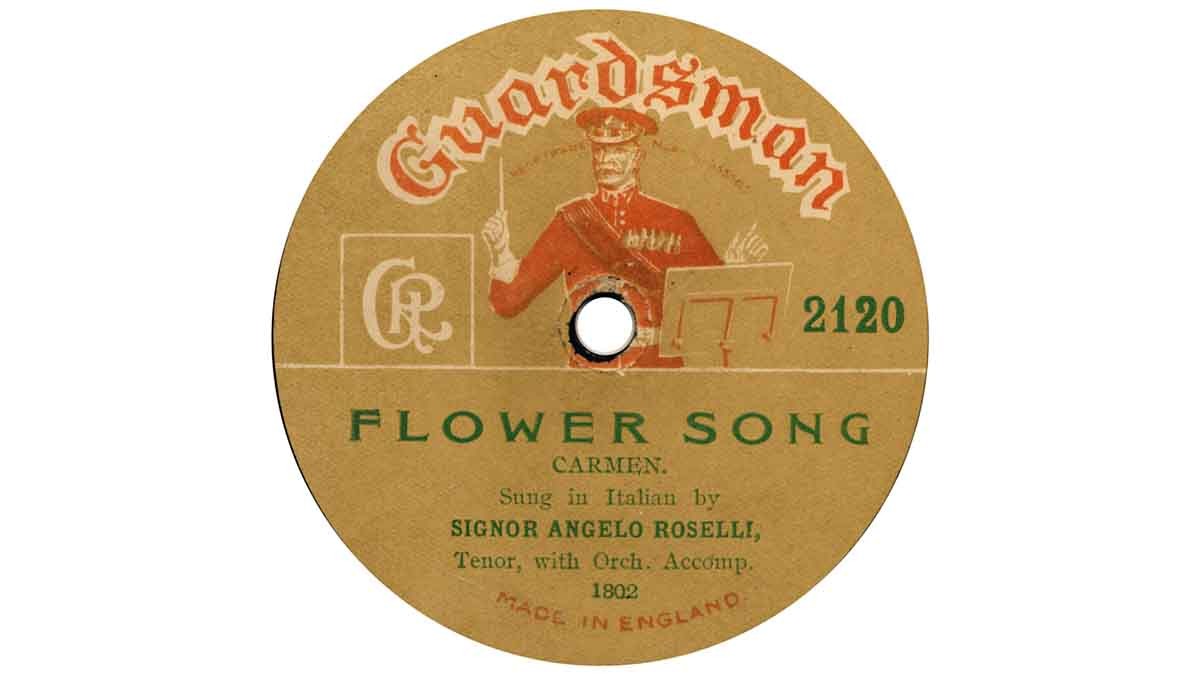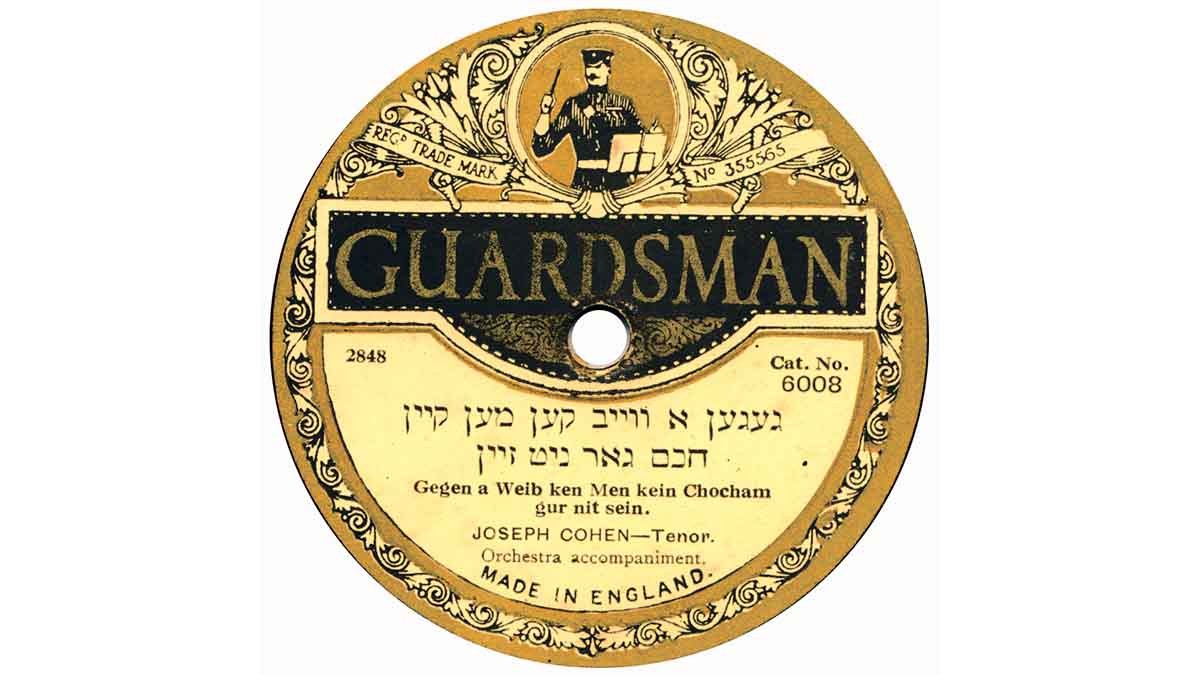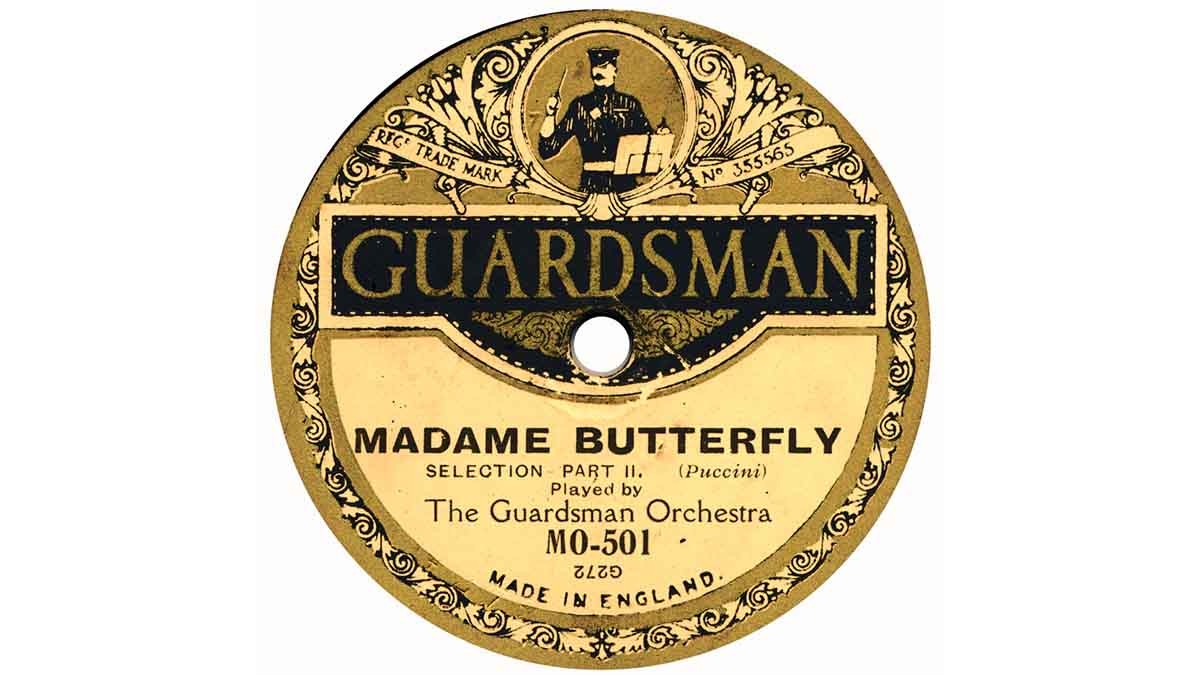
Early British record labels 1898-1926: G
Gabriel Pares | Gaiety | Gamage | Globe | Globophon | Globos | Grafton | Grammavox | Gramophone | Gramstop | Grand Pree | Guardsman
Gabriel Pares
See Frank Andrews, HD 229. Pares (1860 – 1934) was the conductor of the Band of the Garde Républicaine in Paris from 1893 until about 1908. He then retired, but at some point used or hired the band to make his own records. It is not known which company recorded and pressed them. They were imported & sold here, beginning in December 1912 at 3/6 each (17.5p). The discs were all put out as lateral cut; but certain issues (marked ‘S’ in the catalogue) were also available as vertical cut. British repertoire was promised, but seemingly did not appear. They are extremely scarce.
Gaiety
See Frank Andrews, HD 233. A very scarce label. Gertie Gitana was a famous Music Hall artiste who made all her principal records from 1911 – 1916. This side was originally on Jumbo and was made c. May 1913. It is not known who made or sold them. It is most likely they were made during the war (1914-1918), the masters of the enemy concern Lindström (of which Jumbo was one label) having been seized & made available to other concerns.
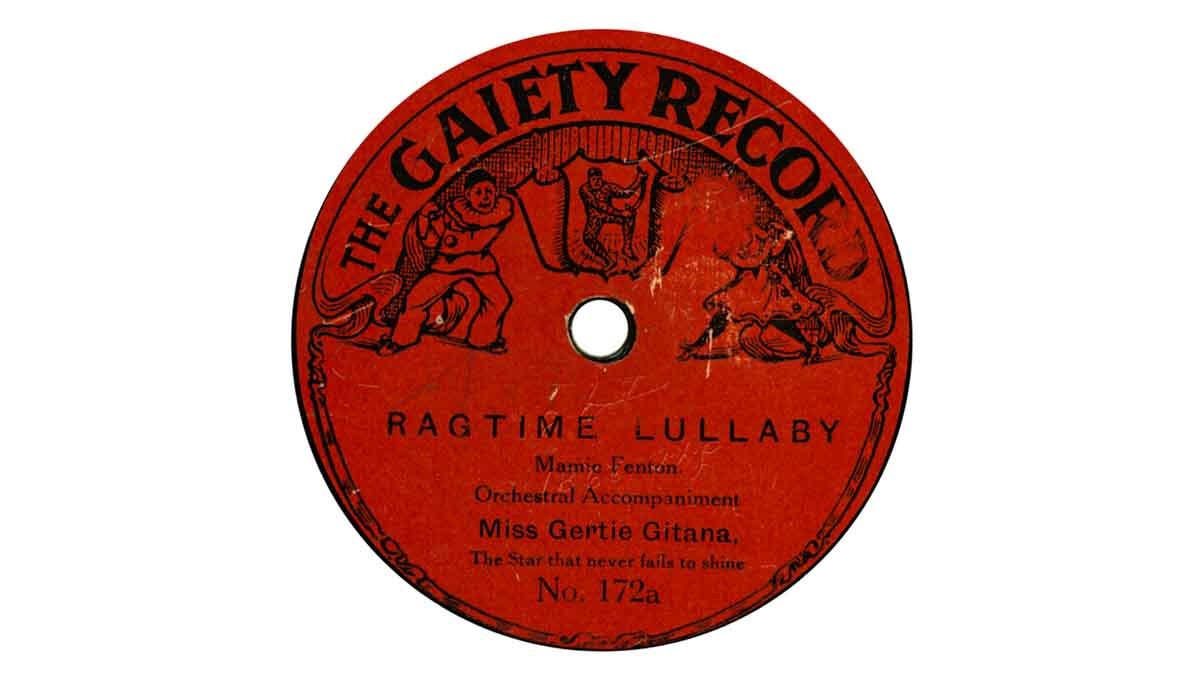
Gamage
See Frank Andrews, HD 182. Gamages was a department store in Holborn, London. See ‘A W Gamage’ and ‘Champion – Gamage’ for earlier record labels they had, around 1912 and 1914, including (under A W Gamage) the morse code teaching discs). The above incarnation is much later, from about 1923, and is ‘client label’ of Homochord, or rather the British Homophone Co. On G-588 we have a side made on 7th April 1911, and was originally on Homophon, one of a batch of 15 sides recorded by banjoist Olly Oakley that day. Such ‘old’ sides were by no means obsolete, and it made sense to use pre-existing material on a new label, to keep costs down; in 1923 records were still being made by the acoustic process, and as the 1911 Homochords were very good quality recordings, nobody would notice that they were ‘old’. Of course, Gamage issued contemporary recordings too, as you can see on their ‘Supplement C’. They were pressed for Homochord by The Universal Music Co., at their factory in Hayes, Middlesex. Later, ‘mighty HMV’ produced the records for Homochord and therefore Gamage too. As a curiosity, we include the electrically recorded G-702, an ‘HMV Gamage’. It carries the master number YR-240-2 on the label. Y denotes 10″ Zonophones, and R indicates a ‘Remote’ or land-line recording, in this case the organ of the Kingsway Hall, played by H Spencer Shaw on 8th April 1926. But in the wax appears HR-457+1. H denotes Homochord, and R another remote session from the Kingsway Hall, but on 10th June 1926, when the player was R Arnold Grier. A small slip, but uncharacteristic of HMV!
Globe
See Frank Andrews, HD 234. Even Frank knows little about this scarce label, but he believes it dates to ca. 1910-1913 and was intended for export to Australia; the one illustrated above did indeed come from Australia. Masters from Beka (above), Bel Canto and Dacapo are known.
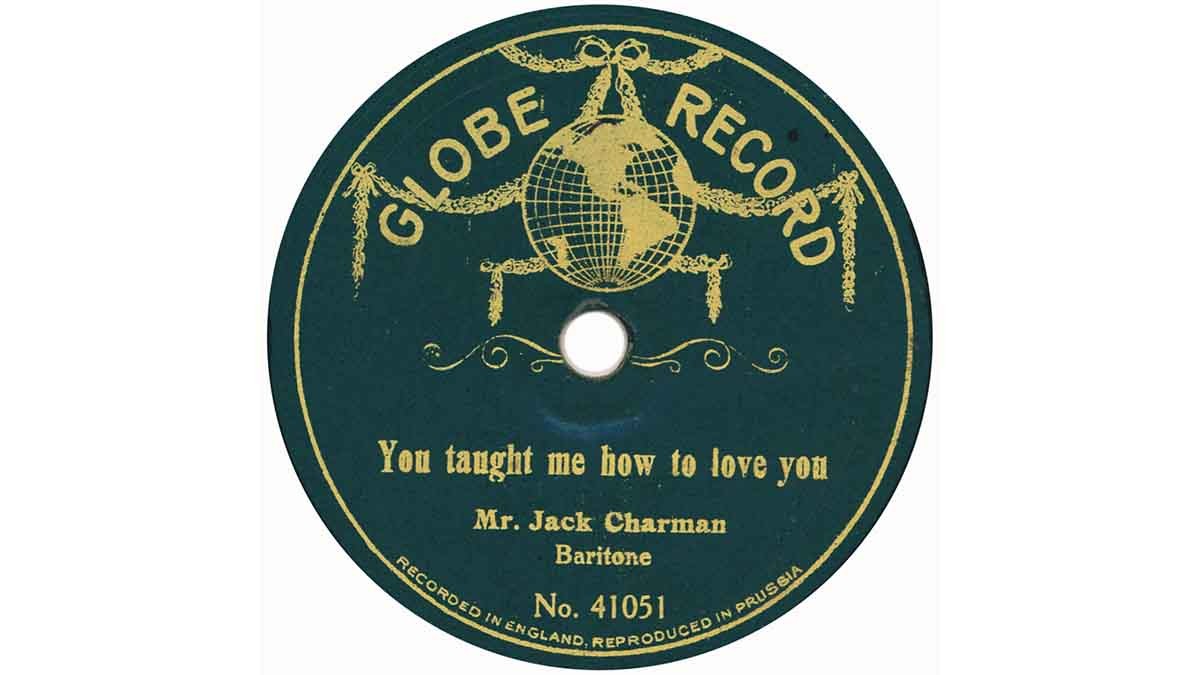
Globophon
See Frank Andrews, BRI. Globophons seen above were imported after the Globos discs in November 1906, and were also made by Schallplatenfabrik Globophon GmbH of Hanover. The first, quadrilingual style has no place of manufacture, and was presumably intended for sale in Germany and also to the UK, Spain and Russia. The ‘normal’ Globophons are very scarce, even though they seem to have been around for some time; 6114 bears a Francis, Day & Hunter copyright stamp with the value coded by a letter – ‘A’ here – and this dates the stamp to ~1914-15. (‘Stamps on Music’, Adam Miller, New Zealand, 2007, p 85.) The factor was Frank Rauth, of Christopher Street, Finsbury Square, London E.C. The masters appearing on them are also to be found on Festival, Apollo, Eclipse, Playwell-Regent and probably others – if you can only find them! They are in a 6000 series with a KV suffix. Dr. Rainer Lotz kindly informed us that KV almost certainly denotes Karl Vogel, a recording expert as early as 1899, and as all the 6000-KV examples we have seen are of British material, the 6000-KVs were probably recorded in London, in one of the several independent recording rooms there.
Globos
See Frank Andrews, BRI, also Frank Andrews Archive. Such is the scarcity of Globos records in the U.K., that we can only marvel at it. The full-page advert above appeared in the trade paper ‘The Phono Trader’, in November 1906 – just in time for the Christmas Trade. Yet, as far as I know, not a single British Globos disc is known? Like most early and ambitious companies, Globos operated on a broad international front, and recently several examples were kindly sent by Mehdi Farahani, of discs made in Paris for issue in Persia. One is illustrated here, courtesy of Behrooz Mobaseri. However, the label used in the UK closely resembles the rather later Pelican Record, and a mock-up is attached here (to go up later). The master numbers of British material are in the 6xxx-KV series. This extends from 6001-KV to at least 6288-KV, and are shared among a family of inter-related labels, such as Festival, Globophon, Eclipse, Apollo & probably others. All of them are obscure. Dr. Rainer Lotz kindly informed us that the initials probably were those of Karl Vogt.

Grafton
One always feels at a loss when one cannot write: See Frank Andrews…, but at the moment I cannot find any writings by Frank on this label – though there must surely be some! All we know is that the ‘S.R.Co.’ appearing on the labels refers to the Scala Record Company, which Frank has detailed, in FTR 49 & 50 (2014). He remarks that in July 1924, Benjamin Abrams, president of the U.S. Emerson concern was in London, promoting the wares of his firm. In August it was announced that Chas. Howell of Scala Records had secured the Emerson connection. There don’t seem to be any Emerson masters on Scala; but there are a large number on Grafton. Therefore, for whatever reason, Grafton was chosen as the vehicle for virtually all these masters over here. (There are a few ‘escapees’ to be found on other labels, e.g. Guardsman!) Having said that, the earliest green-labelled disc is derived from U.S. Vocalion, implying that Grafton was already in existence. This is confirmed by the fact that Mr. Gallaher & Mr. Shean’s popularity dates to well before 1924. Grafton 9141 is a typical ebullient dance issue from the Emerson studio band. There was a very extensive Jewish repertoire on U.S. Emerson, and 9123 is one of a block of six or seven Graftons drawn from it. After some time, the connection with Emerson was relinquished, and Graftons were manufactured by Pathé from their masters. There are well towards 300 Grafton issues, between say 1923 and 1926, but they cannot have sold all that well – it’s not a terribly common label.
Grammavox
See Frank Andrews, TMR 100, 1999. Another major project from Frank – an astonishingly detailed history of the company, closely printed over four A4 size pages. It is indispensable to read this if you want to know about Grammavox and the Sound Recording Company. An abstract is impossible; suffice it to say that Harry Hinks Martin, already a veteran of the recording industry, devised the word Grammavox in 1909, and the SRC was founded in March 1910. It will come as a surprise to many, to learn that their first recordings were made in Egypt, Turkey, Syria, Palestine and North African countries. Martin was obviously anxious to capture some of the potentially lucrative market in what we now call ‘ethnic’ recordings. (Later, recordings were made as far away as Japan, and Grammavox recording experts were an important influence in the creation of the Japan’s own disc record industry.)
Back home, we are equally surprised to learn that an ambitious set of Verdi’s ‘Il Trovatore’ was made by the young SRC, to be synchronized to ciné film. This process, alas, was unsuccessful. Standard British repertoire appeared in August 1911, recorded by well-established artistes. These were records of quality. The SRC had a recording room, but no ‘manufactory’ of its own; the discs were pressed by Crystalate. The SRC organised ‘stencil’ discs for many different British clients, and its masters can be found on Ariel, Butterfly, Champion-Gamage, Chappell, Exo, Guardsman and Olympic among others. The earlier discs are 10.25″ diameter (26cm). The Sound Recording Company started a new label, Popular, in late 1913. These also were 10.5″ to begin with, later 10″. Many surplus Grammavox discs were converted into Populars by the application of a red sticker at the top of the label. The Grammavox label survived until about 1920. They were being sold in the U.S.A. in 1918 and 1919. A few 12″ discs were made but are scarce. The SRC was eventually taken over by Crystalate, who always pressed the discs. SRC had acquired the rights to the name ‘Imperial’ in 1911, and Crystalate used this name for their ‘own label’ from late 1922/early 1923, reissuing many Grammavox and Popular masters. They were also employed on other labels stenciled by Crystalate later still – maybe up to 1926; but after that date, they were rendered obsolete by the advent of electrical recording. By the way, the 5 Grammavox labels illustrated above are all slightly different!
Gramophone
The first, and always the most important, disc record company. Starting in the U.S.A., it came to London in 1898 (see Berliner). Sometimes confusion can arise about the name of a company and the names of its labels. The company was always called The Gramophone Company Ltd., except for a brief period when it diversified and became The Gramophone and Typewriter Ltd., reverting later. This second name, abbreviated to G&T, is used to describe all pre-dog Gramophone issues. The 7″ (18cm) discs were simply called Gramophone Record; the 10″ (25cm) were Gramophone Concert Record, beginning in late 1901. 12″ (30cm) discs followed in 1903, as Gramophone Monarch Record. Celebrity Records were given red labels, and a very few were titled ‘Gramophone Record Red Seal’; thanks to Peter Adamson for pointing this out to us and sending a scarce example. By early 1909 the 7″ discs had been phased out, and the famous dog & gramophone trade mark was adopted. Inevitably, these are known as ‘Dog Concert’ and ‘Dog Monarch’ records. They were, however, short-lived; for in 1910, much to the chagrin of the company, the word ‘gramophone’ was judged by a court of law to have become a generic term for a disc machine. The title of the trade mark picture – ‘His Master’s Voice’ – was adopted as the name of the label. It soon became, for many decades, the best-known trade mark in the world. The Gramophone Co. also made Zonophone, Twin and Cinch discs during our time period.
Gramstop
See Frank Andrews, HD 235. In July 1920, a company called The Automatic Gramophone Syndicate Ltd., based at Retford, Notts., offered an automatic turntable brake, called the Gramstop. It is odd in a way, that many discs had had run-off grooves since perhaps 1902 or 1903, yet there doesn’t seem to have been much thought given to automatic braking? Anyway, now there was such a device, ‘…in a neat Art Box with full instructions at 5s 9d each’ (~28p). I have never seen one, so don’t know how it worked, but above all, the company decided it ought to have its own record label as well. Accordingly, in November 1921 a series of at least 23 Gramstop discs were manufactured by Crystalate from Sound Recording Co.’s ‘Popular’ masters. Frank’s article illustrates the label. They must be very scarce indeed. Popular records did not actually have a run-off groove, so we may infer that you set the limit of travel of the tone arm by placing it in the land at the end of the record, then moving a trip-lever to just touch the arm. The label illustrated in HD 235 has radial bars round the edge, like a stroboscope. Just to make sure, we scanned & enlarged it then put it on a turntable going at 78. It did not ‘strobe’ until the speed was reduced to about 62 rpm – but then, of course, it may have been designed for some strange A.C. mains frequency – 25 Hz, 33 Hz, whatever. 1921 is I think too early for a disc stroboscope, so we provisionally conclude that it is not intended as a stroboscope: merely as a decorative row of radial bars. Though it will indicate ~62 rpm under a 50 Hz bulb. I think the Gramstop people probably stumbled very close indeed to another very useful invention! Perhaps their workshops were lit with D.C? 8^)
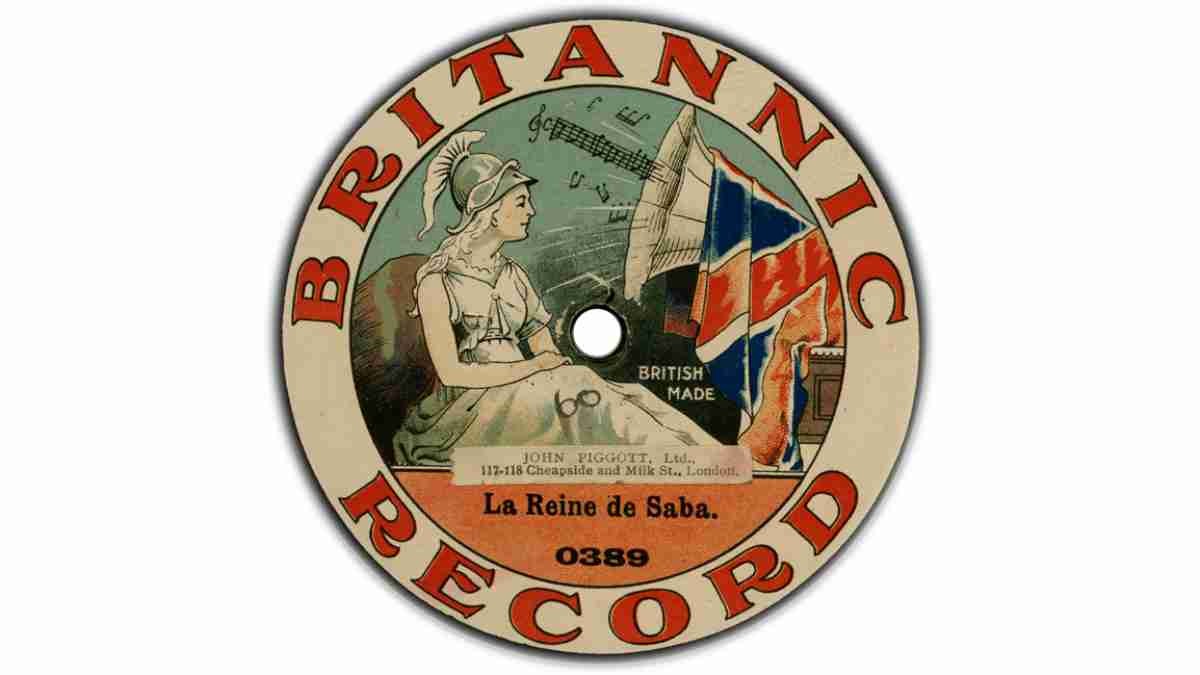
Grand Pree
The first incarnation of Grand Pree records (all of which were sold in Australia) was a bold black on red label, overstuck on Edison Bell Winner discs. Soon the familiar Black Swan design was adopted. 355 was actually Winner 3586, which was issued in October 1921; while G-617 is Winner 3617, of February 1922. The original artistes’ names are preserved. This label is closely related to Beta records, also from Winner. It is probable that old stock Winners were ‘jobbed off’ to a merchant or entrepreneur, later in 1922. The second type of Grand Pree was manufactured in the U.K. by Pathé, using material from its own catalogue. These first appeared in 1923 with a tasteful tourquoise label. We are grateful to Chris Singer for the image of this early type, as well as the Back Swan Winner. Later, the background colour was changed to pale cream, and these predominate. It must be borne in mind that disc records were not recorded and manufactured in Australia until 1924-25, so until then, all disc records were imported – mostly from the U.K. of course.
Guardsman
A relatively complete listing of Invicta and Guardsman records was privately published in 2010. (The Invicta label was re-named Guardsman in early 1914). It was compiled by this writer, principally from data supplied by the late Arthur Badrock and by Frank Andrews, but also by many other contributors. Only 30 copies were printed, and to our surprise, these were quickly taken up. The book has an accompanying CD-ROM which gives much extra data. Eventually a second, much revised edition with will appear.
Invicta (q.v.) began in 1912, changing into Guardsman in early 1914. It continued until 1928, electrical recordings appearing in 1926. It long had only one 10″ catalogue series, which had begun, reassuringly at Invicta 1 in 1912, and a 12″ series which had begun at 2000 in 1913. But in its later years, it was noted for many specialist series of ethnic recordings, with different catalogue series and sometimes blocks of numbers within these. All these are scarce; some are indeed rare in the strict sense of the word. Besides the 6000 series, there was a 6500 series, also of Jewish material, plus a 6750 Polish series. The legendary 7000 ‘Negro Race’ series (most of which were not by African Americans) had another block at 7250 – of Welsh language song! The N-8000 and N-8500 series were again Jewish, the second block evidently of Russian-Jewish type. However, in between those there was an N-8250 series, which was again Welsh. Virtually all this specialist material came from U.S. Vocalion except of course the Welsh items. The 6000 series fared the best, the highest known issue being 6050. Nineteen records came out in the 7000 series. The others probably had very few issues – perhaps just a couple of items. A Guardsman catalogue tells us that Danish records were also put out. None has surfaced yet (early 2014), but I have no reason to doubt their existence. Everything else Guardsman said they had issued, has indeed turned up. A great surprise was the 12″ disc shown at the bottom. Nobody thought they issued any 12″ cream label discs. But it turned out this was ‘circular reasoning’: no known collector had even seen one, therefore there weren’t any… 8^)

